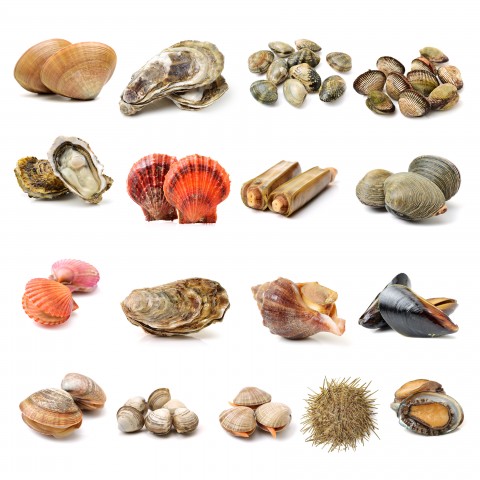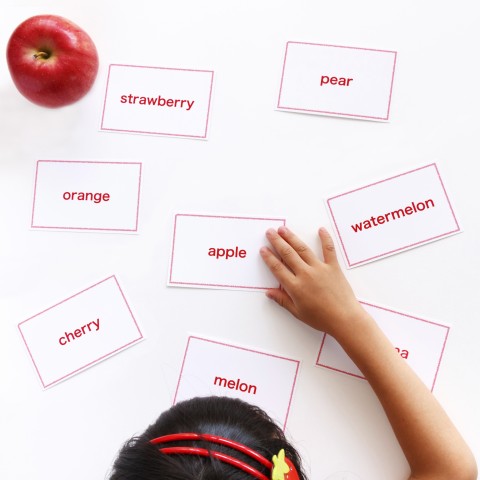
Are you planning on studying or teaching in Hong Kong? Do you know the most common classroom phrases in Cantonese for students or teachers alike? Whether you’re about to join a university as a foreign student or to teach your native language as a teacher, you will have to learn how to communicate in the classroom.
If you’re a student, not only will you need to learn how to address your teachers, but also to understand their instructions. And vice versa if you’re in the teacher’s shoes! You will also need to learn some basic vocabulary, such as school subjects, supplies, and infrastructure.
In this guide, you’ll find everything you need to know as a teacher or a student, from common phrases to vocabulary, instructions, and a list of school subjects. It will teach you how to ask questions or give instructions to save you from struggling with common classroom interactions. Get your pencil case ready, and let’s jump straight into it!

 Table of Contents
Table of Contents
- Classroom Greetings
- Teacher’s Phrases
- Student’s Phrases
- Subjects’ List
- Bonus: Borrowing School Supplies
- How CantoneseClass101.com Can Help You Learn More Cantonese
1. Classroom Greetings
When you first meet your fellow students or teachers, the first set of phrases you will find useful are probably basic greetings and self-introductions. Until you get more experienced, your conversations might not get much further than simple salutations.

1- 早晨。
Romanization: zou2 san4.
Literal Translation: Early morning.
Meaning: Good morning.
2- 午安 。
Romanization: ng5 on1.
Literal Translation: Noon safe.
Meaning: Good afternoon.
3- 你好。
Romanization: nei5 hou2.
Literal Translation: You good.
Meaning: Hello.
4- 拜拜。
Romanization: baai1 baai3.
Literal Translation: Bye bye.
Meaning: Goodbye.
5- 遲啲見。
Romanization: ci4 di1 gin3.
Literal Translation: Later see.
Meaning: See you later.
6- 聽日見。
Romanization: ting1 jat6 gin3.
Literal Translation: Tomorrow see.
Meaning: See you tomorrow.
7- 早唞 。
Romanization: zou2 tau2.
Literal Translation: Early rest.
Meaning: Good night.
- ➜ Once you feel comfortable greeting others and asking simple questions, you might want to step up your game and go further with the introductions. Why not have a look at our complete guides on how to say hello and how to introduce yourself?
2. Teacher’s Phrases
Whether you’re a student or a teacher, this section is for you! As a teacher, you need to know how to address your class, and as a student, you’d better understand what the teacher is saying. Let’s see some of the most common Cantonese teacher’s phrases.

1- 請回答我。
Romanization: cing2 wui4 daap3 ngo5.
Literal Translation: Please answer me.
Meaning: Please answer me.
2- 唔該望住你嘅課本。
Romanization: m4 goi1 mong6 zyu6 nei5 ge3 fo3 bun2.
Literal Translation: Please look at your textbook.
Meaning: Please look at your textbook.
3- 請反覆聆聽。
Romanization: cing2 faan2 fuk1 ling4 ting3.
Literal Translation: Please repeat listen.
Meaning: Please listen to it repeatedly.
4- 如果你有任何問題,請發問。
Romanization: jyu4 gwo2 nei5 jau5 jam6 ho4 man6 tai4, cing2 faat3 man6.
Literal Translation: If you have any questions, please ask.
Meaning: If you have any questions, please ask.
5- 請閱讀。
Romanization: cing2 jyut6 duk6.
Literal Translation: Please read.
Meaning: Please read it.
6- 請保持安靜。
Romanization: cing2 bou2 ci4 on1 zing6.
Literal Translation: Please keep quiet.
Meaning: Please keep quiet.
7- 請打開你本書嘅第十頁。
Romanization: cing2 daa2 hoi1 nei5 bun2 syu1 ge3 dai6 sap6 jip6.
Literal Translation: Please open your book’s page 10.
Meaning: Please open your book on page 10.
8- 請寫低。
Romanization: cing2 se2 dai1.
Literal Translation: Please write down.
Meaning: Please write it down.
9- 你有冇任何問題?
Romanization: nei5 jau5 mou5 jam6 ho4 man6 tai4?
Literal Translation: You have not have questions?
10- 你做晒功課未?
Romanization: nei5 zou6 saai3 gung1 fo3 mei6?
Literal Translation: You finished homework yet?
Meaning: Did you finish your homework?”
- ➜ Are you pursuing or planning to pursue tertiary education in Hong Kong? Check out our Cantonese vocabulary builder to learn essential words for talking about college and university.
3. Student’s Phrases
We’re spending so much time in the classes that we’re bound to face some troubles. It is not much of a problem to have an unforeseen event or an accident as long as you know how to explain it. In case you have encountered questions or things you don’t understand, all you will need to do is ask the right questions.

1- 我聽唔明。
Romanization: ngo5 teng1 m4 ming4.
Literal Translation: I listen not understood.
Meaning: I don’t understand.
2- 唔該講多次。
Romanization: m4 goi1 gong2 do1 ci3.
Literal Translation: Please speak one more time.
Meaning: Please repeat that.
3- 你可唔可以講慢啲?
Romanization: nei5 ho2 m4 ho2 ji5 gong2 maan6 di1?
Literal Translation: You can not can speaker slower?
Meaning: Can you speak a little slower?
4-唔該幫我寫低。
Romanization: m4 goi1 bong1 ngo5 se2 dai1.
Literal Translation: Please help me write down.
Meaning: Please write it down for me.
5- 唔該, 嚟多一次。
Romanization: m4 goi1, lei4 do1 jat1 ci3.
Literal Translation: Please, do one more time.
Meaning: Once again, please.
6- …廣東話點講?
Romanization: …gwong2 dung1 waa2 dim2 gong2?
Literal Translation: …Cantonese how say?
Meaning: How do you say…in Cantonese?
Example 1-
Chinese Characters: 呢個廣東話點講?
Romanization: ni1 go3 gwong2 dung1 waa2 dim2 gong2?
Literal Translation: This Cantonese how say?
Meaning: How do you say this in Cantonese?
Example 2-
Chinese Characters: “Seafood”廣東話點講?
Romanization: “Seafood” gwong2 dung1 waa2 dim2 gong2?
Literal Translation: “Seafood” Cantonese how say?
Meaning: How do you say “seafood” in Cantonese?
7- 請問…
Romanization: cing2 man6…
Literal Translation: Please ask…
Meaning: May I ask…
Example 1-
Chinese Characters: 請問課室喺幾樓?
Romanization: cing2 man6 fo3 sat1 hai2 gei2 lau2?
Literal Translation: Please ask classroom on which floor?
Meaning: May I ask on which floor is the classroom?
Example 2-
Chinese Characters: 請問嗰個廣東話點講?
Romanization: cing2 man6 go2 go3 gwong2 dung1 waa2 dim2 gong2?
Literal Translation: Please ask that Cantonese how say?
Meaning: May I ask how do you say that in Cantonese?
8- 我可唔可以extend個deadline?
Romanization: ngo5 ho2 m4 ho2 ji5 extend go3 deadline?
Literal Translation: I can not can extend deadline?
Meaning: Could I get an extension on the deadline?
9- 我唔係好舒服, 我可唔可以請日假?
Romanization: ngo5 m4 hai6 hou2 syu1 fuk6, ngo5 ho2 m4 ho2 ji5 ceng2 jat6 gaa3?
Literal Translation: I am not very comfortable, I can not can apply day off?
Meaning: I don’t feel well. Can I be excused for the day?
10- 有人偷咗我本書。
Romanization: jau5 jan4 tau1 zo2 ngo5 bun2 syu1.
Literal Translation: Someone stole my book.
Meaning: Someone stole my books.
11- 我遲到因為等唔到巴士。
Romanization: ngo5 ci4 dou3 jan1 wai6 dang2 m4 dou2 baa1 si2.
Literal Translation: I late because wait can’t arrive bus.
Meaning: I am late because the bus did not show up.
12- 我隻狗食咗我啲功課。
Romanization: ngo5 zek3 gau2 sik6 zo2 ngo5 di1 gung1 fo3.
Literal Translation: My dog ate my homework.
Meaning: My dog ate my homework.
4. Subjects’ List
You probably already know how to talk about what you’re studying or teaching, but whenever you’re chatting with your fellow students or teachers, a variety of other subject matters may come up.

| # | Chinese Characters | Romanization | Meaning |
| 1 | 數學 | sou3 hok6 | Mathematics |
| 2 | 化學 | faa3 hok6 | Chemistry |
| 3 | 生物學 | sang1 mat6 hok6 | Biology |
| 4 | 地理 | dei6 lei5 | Geography |
| 5 | 體育 | tai2 juk6 | Physical Education |
| 6 | 歷史 | lik6 si2 | History |
| 7 | 美術 | mei5 seot6 | Art |
| 8 | 音樂 | jam1 ngok6 | Music |
Here are how you can enquire other’s or express your own favorite subject:
Question- 你最喜愛嘅科目係乜?
Romanization: nei5 zeoi3 hei2 oi3 ge3 fo1 muk6 hai6 mat1?
Literal Translation: You favorite subject is what?
Meaning: What is your favorite subject?
Answer- 我最喜愛嘅科目係…。
Romanization: ngo5 zeoi3 hei2 oi3 ge3 fo1 muk6 hai6 …
Literal Translation: My favorite subject is…
Meaning: My favorite subject is…
- ➜ To practice your pronunciation, be sure to stop by our free vocabulary list on School Subjects, with recorded words and example phrases, on CantoneseClass101.
5. Bonus: Borrowing School Supplies
Have you ever forgotten to bring your pencil case with you? No worries, this section will introduce you to some basic school supplies vocabulary, as well as how to borrow one from others.
| # | Chinese Characters | Romanization | Meaning |
| 1 | 鉛筆 | jyun4 bat1 | pencil |
| 2 | 原子筆 | jyun4 zi2 bat1 | pen |
| 3 | 擦膠 | caat3 gaau1 | eraser |
| 4 | 紙 | zi2 | paper |
| 5 | 書本 | syu1 bun2 | book |
| 6 | 作業 | zok3 jip6 | homework |
| 7 | 課本 | fo3 bun2 | textbook |
| 8 | 字典 | zi6 din2 | dictionary |
You can ask someone to lend you a pen by asking…
Chinese Characters: 唔該借你嘅原子筆畀我。
Romanization: m4 goi1 ze3 nei5 ge3 jyun4 zi2 bat1 bei2 ngo5.
Literal Translation: Please lend your pen to me.
Meaning: Please lend me your pen.
6. How CantoneseClass101.com Can Help You Learn More Cantonese

After mastering Cantonese phrases to navigate schools, do you want to put more Cantonese phrases for other occasions into your pocket? With CantoneseClass101.com, you can have your daily dose of Cantonese whenever and wherever you want, through mobile apps, desktop software, and our website. We offer entertaining, engaging, and effective lessons on various aspects of the Cantonese language and culture.
Until now, we’ve delivered more than 750,000,000 lessons to thousands of happy students from all around the globe. You can learn Cantonese with over 1060 audio and video lessons delivered by our knowledgeable and energetic hosts, detailed PDF lesson notes, an abundance of vocabulary learning tools, spaced repetition flashcards, and a lively community where you can discuss the lessons with fellow learners. What are you waiting for? Download our lessons, enjoy our audio and video files, and start learning now!
And keep in mind that if you prefer a 1-on-1 learning approach and want to further accelerate your Cantonese learning, you can take advantage of our MyTeacher program!
Know that your hard work will pay off, and before you know it, you’ll be speaking Cantonese like a native!

Learn the Names of Animals in Cantonese

What’s your favorite animal? Do you have any pets?
Questions like these make great conversation starters. Animals are a topic of interest for many people, and we sure do love our pets! What better way to break the ice and get to know someone than by asking about their favorite furry, scaly, or feathery creatures?

Fancy putting some Cantonese animal words in your pocket? In this article, you’ll learn many animal names in Cantonese for different categories: pets, farm animals, wild beasts, sea creatures, birds, and all sorts of tiny bugs. We’ll spice it up with some animal proverbs and the “Twelve Zodiac Animals” story. Read on!
 Table of Contents
Table of Contents
- At Home (Pets)
- On the Farm (Farm Animals)
- In the Wild / Forest / Safari (Land Animals)
- In the Ocean (Aquatic / Marine Animals)
- Bugs and Insects
- Birds, Reptiles & Amphibians
- Animal Body Parts
- Animal Proverbs
- Bonus: The Twelve Zodiac Animals
- How CantoneseClass101.com Can Help You Learn More Cantonese
1. At Home (Pets)
Compared to the rest of the world, Hong Kong is home to very few pets. According to a global survey, 64% of Hongkongers do not own pets—this makes Hong Kong the country with the second-highest rate of non-pet owners among the 22 countries surveyed. Among those who do own pets, dogs and fish are the most common, with each one accounting for 14% of all pets in Hong Kong. And from my own (unscientific) observation, I spotted approximately ten dogs walking along the street while writing this article.
With this in mind, let me introduce you to the Cantonese words for “dog,” “goldfish,” and several other less popular pets.

| # | Chinese Characters | Romanization | Meaning |
| 1 | 狗 | gau2 | dog |
| 2 | 金魚 | gam1 jyu2 | goldfish |
| 3 | 貓 | maau1 | cat |
| 4 | 倉鼠 | cong1 syu2 | hamster |
| 5 | 兔仔 | tou3 zai2 | rabbit |
| 6 | 鸚鵡 | jing1 mou5 | parrot |
| 7 | 天竺鼠 | tin1 zuk1 syu2 | guinea pig |
| 8 | 刺蝟 | ci3 wai6 | hedgehog |
2. On the Farm (Farm Animals)
As one of the most densely populated cities on Earth, farming in Hong Kong has long been considered a sunset industry. Most Hongkongers opt for the bustling city life and dedicate themselves to other industries like Business and Finance. At the same time, the amount of agricultural land has been dwindling. As a result, we rely heavily on imports.
Below, you’ll find the names of several animals in Cantonese that you might find on a farm.

| # | Chinese Characters | Romanization | Meaning |
| 1 | 馬 | maa5 | horse |
| 2 | 雞 | gai1 | chicken |
| 3 | 火雞 | fo2 gai1 | turkey |
| 4 | 綿羊 | min4 joeng2 | sheep / lamb |
| 5 | 母牛 | mou5 ngau4 | cow |
| 6 | 豬 | zyu1 | pig |
| 7 | 鴨 | aap3 | duck |
| 8 | 鵝 | ngo2 | goose |
| 9 | 驢 | lou4 | donkey |
| 10 | 山羊 | saan1 joeng4 | goat |
- → To learn more Cantonese words and practice your pronunciation, why not stop by our vocabulary lesson Farm Animals on CantoneseClass101.com?
3. In the Wild / Forest / Safari (Land Animals)
Hong Kong does not have many wild animals, nor does it have a forest—but it’s still worthwhile to learn some land animal names in Cantonese so that you can use them in conversations or understand them in documentaries!

| # | Chinese Characters | Romanization | Meaning |
| 1 | 長頸鹿 | coeng4 geng2 luk2 | giraffe |
| 2 | 象 | zoeng6 | elephant |
| 3 | 狼 | long4 | wolf |
| 4 | 獅子 | si1 zi2 | lion |
| 5 | 老虎 | lou5 fu2 | tiger |
| 6 | 箭豬 | zin3 zyu1 | porcupine |
| 7 | 熊 | hung4 | bear |
| 8 | 大灰熊 | daai6 fui1 hung4 | grizzly bear |
| 9 | 北極熊 | bak1 gik6 hung4 | polar bear |
| 10 | 樹熊 | syu6 hung4 | koala |
| 11 | 熊貓 | hung4 maau1 | panda |
| 12 | 鹿 | luk2 | deer |
| 13 | 大鹿 | daai6 luk2 | moose |
| 14 | 馴鹿 | seon4 luk2 | reindeer |
| 15 | 松鼠 | cung4 syu2 | squirrel |
| 16 | 袋鼠 | doi6 syu2 | kangaroo |
| 17 | 臭鼬 | cau3 jau6 | skunk |
| 18 | 花栗鼠 | faa1 leot6 syu2 | chipmunk |
| 19 | 浣熊 | wun2 hung4 | raccoon |
| 20 | 馬騮 | maa5 nau1 | monkey |
| 21 | 大猩猩 | daai6 sing1 sing1 | gorilla |
| 22 | 黑猩猩 | haak1 sing1 sing1 | chimpanzee |
| 23 | 花豹 | faa1 paau3 | leopard |
| 24 | 豹 | paau3 | panther |
| 25 | 獵豹 | lip6 paau3 | cheetah |
| 26 | 捷豹 | zit6 paau3 | jaguar |
| 27 | 斑馬 | baan1 maa5 | zebra |
| 28 | 河馬 | ho4 maa5 | hippopotamus |
| 29 | 犀牛 | sai1 ngau4 | rhinoceros |
| 30 | 蝙蝠 | pin1 fuk1 | bat |
4. In the Ocean (Aquatic / Marine Animals)
Did you know that Hong Kong is surrounded by sea? One of the most picturesque tourist spots in Hong Kong is Victoria Harbour! Hong Kong is also famous for its abundance of seafood (and thus, seafood restaurants).

| # | Chinese Characters | Romanization | Meaning |
| 1 | 蟹 | haai5 | crab |
| 2 | 魚 | jyu2 | fish |
| 3 | 龍蝦 | lung4 haa1 | lobster |
| 4 | 海狗 | hoi2 gau2 | seal |
| 5 | 水母 | seoi2 mou5 | jellyfish |
| 6 | 海豚 | hoi2 tyun4 | dolphin |
| 7 | 鯨魚 | king4 jyu4 | whale |
| 8 | 魷魚 | jau4 jyu2 | squid |
| 9 | 鯊魚 | saa1 jyu2 | shark |
| 10 | 八爪魚 | baat3 zaau2 jyu4 | octopus |
| 11 | 海獅 | hoi2 si1 | sealion |
| 12 | 海象 | hoi2 zoeng6 | walrus |
| 13 | 海獺 | hoi2 caat3 | sea otter |
| 14 | 海膽 | hoi2 daam2 | sea urchin |
| 15 | 河豚 | ho4 tyun4 | puffer fish |
| 16 | 鱔 | sin5 | eel |
- → To practice your pronunciation, why not stop by our vocabulary list Marine Animals and Fish on CantoneseClass101.com?
5. Bugs and Insects
The smothering humidity in Hong Kong is beloved by bugs and insects—especially mosquitoes. Check out the table below for the Cantonese names of common bugs and insects in Hong Kong.

| # | Chinese Characters | Romanization | Meaning |
| 1 | 甲蟲 | gaap3 cung4 | ladybug |
| 2 | 蜻蜓 | cing1 ting4 | dragonfly |
| 3 | 蝴蝶 | wu4 dip2 | butterfly |
| 4 | 蜜蜂 | mat6 fung1 | bee |
| 5 | 螞蟻 | maa5 ngai5 | ant |
| 6 | 蜘蛛 | zi1 zyu1 | spider |
| 7 | 烏蠅 | wu1 ying1 | fly |
| 8 | 蚊 | man1 | mosquito |
| 9 | 黃蜂 | wong4 fung1 | wasp |
| 10 | 毛蟲 | mou4 cung4 | caterpillar |
6. Birds, Reptiles & Amphibians
According to the Agriculture, Fisheries and Conservation Department of Hong Kong, the most common birds in Hong Kong’s urban areas are:
- Eurasian Tree Sparrow
- Oriental Magpie Robin
- Eurasian Magpie
- Black-crowned Night Heron
- Red-whiskered Bulbul
In wetlands, you’ll commonly find the White-throated Kingfisher and Little Egret.

Here, we’ve listed the more common vocabulary words for birds, reptiles, amphibians, and similar animals to get you started:
| # | Chinese Characters | Romanization | Meaning |
| 1 | 雀 | zoek3 | bird |
| 2 | 烏鴉 | wu1 aa1 | crow / raven |
| 3 | 白鴿 | bat6 gap2 | dove |
| 4 | 麻雀 | maa4 zoek2 | sparrow |
| 5 | 鷹 | jing1 | eagle |
| 6 | 貓頭鷹 | maau1 tau4 jing1 | owl |
| 7 | 鸚鵡 | jing1 mou5 | parrot |
| 8 | 海鷗 | hoi2 au1 | seagull |
| 9 | 企鵝 | kei5 ngo2 | penguin |
| 10 | 蝸牛 | wo1 ngau4 | snail |
| 11 | 青蛙 | cing1 waa1 | frog |
| 12 | 蛇 | se4 | snake |
| 13 | 鱷魚 | ngok6 jyu4 | crocodile / alligator |
| 14 | 烏龜 | wu1 gwai1 | turtle |
7. Animal Body Parts
Now that you know the names of several animals in Cantonese, you’ll benefit from learning what to call their most defining body parts. Here, we’ve listed ten common Cantonese words for you.
| # | Chinese Characters | Romanization | Meaning |
| 1 | 觸角 | zuk1 gok3 | antenna |
| 2 | 喙 | fui3 | beak |
| 3 | 爪 | zaau2 | claw / paw |
| 4 | 羽毛 | jyu5 mou4 | feather |
| 5 | 角 | gok3 | horn |
| 6 | 毛 | mou4 | fur |
| 7 | 鱗 | leon4 | scale |
| 8 | 尾巴 | mei5 baa1 | tail |
| 9 | 觸鬚 | zuk1 sou1 | tentacle |
| 10 | 翅膀 | ci3 pong4 | wing |
- → Want to learn more animal-related words? See our vocabulary list Sounds That Animals Make!
8. Animal Proverbs
There are so many Cantonese animal proverbs! Below are our top five picks:
1 – 豬乸會上樹
Romanization: zyu1 naa2 wui5 soeng5 syu6
Literal Translation: “A sow (a female pig) can climb trees”
More about the proverb –
- Meaning / Equivalent Proverb: “When pigs fly”
- Example Scenario: When Martin is really bad at math, but he claims that he will get full marks on the upcoming calculus exam, you might reply with this phrase.

2 – 掛羊頭賣狗肉
Romanization: gwaa3 joeng4 tau4 maai6 gau2 juk6
Literal Translation: “Hang up a sheep’s head and sell dog meat”
More about the proverb –
- Meaning / Equivalent Proverb: “Palm off”
- Example Scenario: When Lucy claims that the designer bags she is selling are real (but they are indeed fake), you may say this phrase.
- Additional notes: Hong Kong prohibits the slaughter of dogs or cats for the use of food. You won’t actually find shops selling dog meat!
3 – 大石砸死蟹
Romanization: daai6 sek6 zaak6 sei2 haai5
Literal Translation: “A big rock weighs down on a crab”
More about the proverb –
- Meaning / Equivalent Proverb: Overpowered by an overwhelming force
- Example Scenario: Imagine your boss asks you to perform a task that’s totally out of your job description, and you have to do it because of his dominating power in the workplace. You may express your frustration with this phrase.
4 – 牛唔飲水唔撳得牛頭低
Romanization: ngau4 m4 jam2 seoi2 m4 gam6 dak1 ngau4 tau4 dai1
Literal Translation: “If a cow doesn’t want to drink, you can’t force its head down.”
More about the proverb –
- Meaning / Equivalent Proverb: “You can lead a horse to water, but you can’t make it drink.” It implies that one should take full responsibility for his or her own actions.
- Example Scenario: Imagine that Christy enters a relationship with a guy whom she knows is in love with someone else, and then she claims to be the victim when she gets hurt. In this situation, you could say this phrase.
5 – 老貓燒鬚
Romanization: lou5 maau1 siu1 sou1
Literal Translation: “An old cat burns its whiskers.”
More about the proverb –
- Meaning / Equivalent Proverb: We use this expression in reference to an expert who makes a careless mistake in their area of expertise.
- Example Scenario: Let’s say that Rick makes a silly grammatical mistake when he is giving an English lesson. If you catch the mistake, you might say this phrase in response.
9. Bonus: The Twelve Zodiac Animals
Unlike the Western zodiac, which takes twelve months to cycle through the constellation signs, the Chinese zodiac cycle is twelve years long and assigns an animal to each year.
According to legend, the Jade Emperor held a race for the animals. He declared that the calendar years would be named for each animal in the order they arrived at the goal.

This race involved a river crossing, and the ox almost won since it was the strongest swimmer. However, it came in second because the rat, who had secretly jumped onto the ox’s back to be carried across the river, leaped out ahead of him. Next came the tiger, the rabbit, and the dragon. The horse should have come next, but the snake hidden in its hoof jumped out and scared him after they had crossed the river, so the snake managed to finish before the horse. The goat, monkey, and rooster made their way across by working together and finished at the same time. The dog could have finished earlier, but stopped to frolic and bathe in the water. The pig had stopped to rest halfway through, and thus came in last.
With that, our 12-year cycle is as follows:
| # | Chinese Characters | Romanization | Meaning |
| 1 | 鼠 | syu2 | rat |
| 2 | 牛 | ngau4 | ox / cow |
| 3 | 虎 | fu2 | tiger |
| 4 | 兔 | tou3 | rabbit |
| 5 | 龍 | lung4 | dragon |
| 6 | 蛇 | se4 | snake |
| 7 | 馬 | maa5 | horse |
| 8 | 羊 | joeng4 | sheep |
| 9 | 猴 | hau4 | monkey |
| 10 | 雞 | gai1 | rooster |
| 11 | 狗 | gau2 | dog |
| 12 | 豬 | zyu1 | pig |
10. How CantoneseClass101.com Can Help You Learn More Cantonese
What’s your favorite animal? Do you remember its name in Cantonese?
At this stage in your learning journey, you should focus on continuing to build your vocabulary and starting to familiarize yourself with key grammar points.
With CantoneseClass101.com, you can have your daily dose of Cantonese whenever and wherever you want, through mobile apps, desktop software, and our website. We offer entertaining, engaging, and effective lessons on various aspects of the Cantonese language and culture.
Until now, we’ve delivered more than 750,000,000 lessons to thousands of happy students from all around the globe. You can learn Cantonese with over 1060 audio and video lessons delivered by our knowledgeable and energetic hosts, detailed PDF lesson notes, an abundance of vocabulary learning tools, spaced repetition flashcards, and a lively community where you can discuss the lessons with fellow learners. What are you waiting for? Download our lessons, enjoy our audio and video files, and start learning now!
And keep in mind that if you prefer a 1-on-1 learning approach and want to further accelerate your Cantonese learning, you can take advantage of our MyTeacher service.
Know that your hard work will pay off, and before you know it, you’ll be speaking Cantonese like a native!

The Top 10 Most Common Cantonese Questions and Answers

Just imagine: You’re going out with a group of native Cantonese-speakers. This is the perfect opportunity to make friends and practice your Cantonese in a real-life situation! But how do you break the ice? What should you say if you run out of topics or if your Cantonese isn’t solid enough to fuel the conversation?
The universal answer is: ask questions!
Among countless benefits, being able to ask questions in Cantonese will help you avoid awkward silences by keeping the conversation going. It will also make the other person feel like you want to know more about them and value their opinion, thus making you more likeable. Asking questions opens a world of new information and cultural insight!
And one more perk: you don’t have to talk too much, just sit back and listen. Don’t think about your next question or how to steer the conversation back toward yourself. Just enjoy the ride and dive into whatever the other person has to say.
Convinced yet?
In this guide, you’ll not only learn how to ask questions in Cantonese, but also how to answer them. Let’s get started!
 Table of Contents
Table of Contents
- What’s your name?
- Where are you from?
- Do you speak Cantonese?
- How long have you been studying ?
- Have you been to [country/city]?
- How are you?
- What time is it?
- What are you doing?
- What’s wrong?
- How much is it?
- How CantoneseClass101.com Can Help You Learn More Cantonese
1. What’s your name?

Q: 你叫咩名?
“What’s your name?” has to be the most common conversation starter of all. Make sure you keep it in your pocket list!
Romanization: nei5 giu3 me1 meng2
Breakdown:
| Character | Romanization | Meaning |
| 你 | nei5 | You |
| 叫 | giu3 | Call |
| 咩 | me1 | What |
| 名 | meng2 | Name |
A: 我叫。
The answer to this question is pretty straightforward. You either state your name directly, or add the words 我叫before your name and make it “我叫.”
Romanization: ngo5 giu3 .
Breakdown:
| Character | Romanization | Meaning |
| 我 | ngo5 | I |
| 叫 | giu3 | Call |
See some examples of how to answer this question in Cantonese below!
Example 1
Chinese Characters: 我叫欣怡。
Meaning: My name is Yan-yee.
Romanization: ngo5 giu3 jan1 ji4
Example 2
Chinese Characters: 我叫俊傑。
Meaning: My name is Chun-kit.
Romanization: ngo5 giu3 zeon3 git6
Example 3
Chinese Characters: 我叫詠珊。
Meaning: My name is Wing-shan.
Romanization: ngo5 giu3 wing6 saan1
Example 4
Chinese Characters: 我叫偉文。
Meaning: My name is Wai-man.
Romanization: ngo5 giu3 wai5 man4
2. Where are you from?
Q: 你邊度嚟㗎?
This Cantonese question opens up a lot of possible conversation topics, such as cultural differences and must-see places, for you and your new Cantonese friends!
Romanization: nei5 bin1 dou6 lei4 gaa3
Breakdown:
| Character | Romanization | Meaning |
| 你 | nei5 | You |
| 邊度 | bin1 dou6 | Where |
| 嚟 | lei4 | Come |
| 㗎 | gaa3 | a Cantonese question particle that indicates question or doubt |
A: 我嚟嘅。
There are two ways you can answer this question. The first is by answering directly with your city or country:
- 香港 (hoeng1 gong2) – “Hong Kong”
You may also add the word 我 before “Hong Kong,” and 嚟嘅 after it: 我香港嚟嘅.
Romanization: ngo5 lei4 ge3
Breakdown:
| Character | Romanization | Meaning |
| 我 | ngo5 | I |
| 嚟 | lei4 | To come |
| 嘅 | ge3 | a final particle that implies assertion with emphasis |
Here are some examples:
Example 1
Chinese Characters: 我美國嚟嘅。
Meaning: I’m from the U.S.
Romanization: ngo5 mei5 gwok3 lei4 ge3
Example 2
Chinese Characters: 我英國嚟嘅。
Meaning: I’m from England.
Romanization: ngo5 jing1 gwok3 lei4 ge3
Example 3
Chinese Characters: 我中國嚟嘅。
Meaning: I’m from China.
Romanization: ngo5 zung1 gwok3 lei4 ge3
Example 4
Chinese Characters: 我德國嚟嘅。
Meaning: I’m from Germany.
Romanization: ngo5 dak1 gwok3 lei4 ge3
- → For a list of more countries, check out CantoneseClass101’s relevant vocabulary list!
3. Do you speak Cantonese?

Q: 你識唔識講?
This is one of those basic Cantonese questions that you may be asked when you meet new friends in Hong Kong!
Romanization: nei5 sik1 m4 sik1 gong2
Breakdown:
| Character | Romanization | Meaning |
| 你 | nei5 | You |
| 識唔識 | sik1 m4 sik1 | To know or not |
| 講 | gong2 | Speak |
Here’s an example:
Chinese Characters: 你識唔識講廣東話?
Meaning: Do you speak Cantonese?
Romanization: nei5 sik1 m4 sik1 gong2 gwong2 dung1 waa2
A: Varies
Depending on how well you know the language, you can answer with one of the below phrases!
| Answer | Romanization | Meaning |
| 識少少。 | sik1 siu2 siu2 | Yes, I speak a little. |
| 識一啲。 | sik1 jat1 di1 | Yes, I speak some. |
| 識啲啲。 | sik1 di1 di1 | Yes, I speak a little bit. |
| 識大部分。 | sik1 daai6 bou6 fan6 | Yes, I speak quite a lot. |
4. How long have you been studying ?

Q: 你學咗幾耐?
Once your new Cantonese friends find out that you speak at least a little bit of their language, you may very likely be asked this question!
Romanization: nei5 hok6 zo2 gei2 noi6
Breakdown:
| Character | Romanization | Meaning |
| 你 | nei5 | You |
| 學咗 | hok6 zo2 | To have learned |
| 幾耐 | gei2 noi6 | How long |
Here’s an example:
Chinese Characters: 你學咗廣東話幾耐?
Meaning: How long have you been studying Cantonese?
Romanization: nei5 hok6 zo2 gwong2 dung1 waa2 gei2 noi6
A: Varies
Here are a few examples of how you can answer this question.
| Answer | Romanization | Meaning |
| 一個月。 | jat1 go3 jyut6 | For one month. |
| 一年。 | jat1 nin4 | For one year. |
| 三個月。 | saam1 go3 jyut6 | For three months. |
| 兩年。 | loeng5 nin4 | For two years. |
5. Have you been to [country/city]?

Q: 你有冇去過?
Another great conversation starter. You can share your travel stories and learn more about your Cantonese friends’ adventures!
Romanization: nei5 jau5 mou5 heoi3 gwo3
Breakdown:
| Character | Romanization | Meaning |
| 你 | nei5 | You |
| 有冇 | jau5 mou5 | To have or to not have |
| 去過 | heoi3 gwo3 | Have been |
Here’s an example:
Chinese Characters: 你有冇去過香港?
Meaning: Have you been to Hong Kong?
Romanization: nei5 jau5 mou5 heoi3 gwo3 hoeng1 gong2
A: Varies
| Answer | Romanization | Meaning |
| 有呀,去過兩次。 | jau5 aa3, heoi3 gwo3 loeng5 ci3 | Yes, I’ve been twice. |
| 有呀,去過四次。 | jau5 aa3, heoi3 gwo3 sei3 ci3 | Yes, I’ve been four times. |
| 有呀,去過一次。 | jau5 aa3, heoi3 gwo3 jat1 ci3 | Yes, I’ve been once. |
| 冇呀。 | mou5 aa3 | No. (I have never been.) |
6. How are you?
Q: 你好嗎?
This is one of the most useful Cantonese questions to know, especially once you’ve made some good friends and want to inquire about their well-being.
Romanization: nei5 hou2 maa3
Breakdown:
| Character | Romanization | Meaning |
| 你 | nei5 | You |
| 好 | hou2 | Good |
| 嗎 | maa3 | a Cantonese question particle |
A: Varies
| Answer | Romanization | Meaning |
| 我幾好。 | ngo5 gei2 hou2 | I’m fine. |
| 我好好。 | ngo5 hou2 hou2 | I’m great. |
| 我非常好。 | ngo5 fei1 soeng4 hou2 | I’m very good. |
| 我唔係幾好。 | ngo5 m4 hai6 gei2 hou2 | I’m not so well. |
- → Do you need more vocabulary to answer this question? Have a look at our vocabulary list of words and phrases for describing your feelings!
7. What time is it?

Q: 而家幾點?
A great question to ask when you don’t have your watch with you!
Romanization: ji4 gaa1 gei2 dim2
Breakdown:
| Character | Romanization | Meaning |
| 而家 | ji4 gaa1 | Now |
| 幾 | gei2 | How long / How many / How much |
| 點 | dim2 | Time |
A: Varies
| Answer | Romanization | Meaning |
| 十二點。 | sap6 ji6 dim2 | It’s twelve o’clock. |
| 九點。 | gau2 dim2 | It’s nine o’clock. |
| 六點。 | luk6 dim2 | It’s six o’clock. |
| 兩點。 | loeng5 dim2 | It’s two o’clock. |
8. What are you doing?
Q: 你做緊咩?
Are you curious what your new bestie is up to? Ask them in Cantonese!
Romanization: nei5 zou6 gan2 me1
Breakdown:
| Character | Romanization | Meaning |
| 你 | nei5 | You |
| 做緊 | zou6 gan2 | Doing |
| 咩 | me1 | What |
A: Varies
| Answer | Romanization | Meaning |
| 我諗緊嘢。 | ngo5 lam2 gan2 je5 | I’m thinking. |
| 我食緊嘢。 | ngo5 sik6 gan2 je5 | I’m eating. |
| 我做緊嘢。 | ngo5 zou6 gan2 je5 | I’m working. |
| 我畫緊嘢。 | ngo5 waak6 gan2 je5 | I’m drawing. |
9. What’s wrong?

Q: 咩事呀?
Does your friend seem down today? Ask them what’s wrong, and lend a listening ear!
Romanization: me1 si6 aa3
Breakdown:
| Character | Romanization | Meaning |
| 咩 | me1 | What |
| 事 | si6 | Matter |
| 呀 | aa3 | a Cantonese question particle |
A: Varies
| Answer | Romanization | Meaning |
| 我好攰。 | ngo5 hou2 gui6 | I’m tired. |
| 我唔舒服。 | ngo5 m4 syu1 fuk6 | I’m unwell. |
| 我好眼瞓。 | ngo5 hou2 ngaan5 fan3 | I’m sleepy. |
| 我擔⼼。 | ngo5 daam1 sam1 | I’m worried. |
10. How much is it?
Q: 呢個幾錢?
You have to know this question if you plan on shopping in Hong Kong!
Romanization: ni1 go3 gei2 cin2
Breakdown:
| Character | Romanization | Meaning |
| 呢個 | ni1 go3 | This |
| 幾 | gei2 | How long / How many / How much |
| 錢 | cin2 | Money |
A: Varies
| Answer | Romanization | Meaning |
| 五十蚊。 | ng5 sap6 man1 | $50 |
| 一百蚊。 | jat1 baak3 man1 | $100 |
| 二千蚊 | ji6 cin1 man1 | $2000 |
| 兩百蚊。 | loeng5 baak3 man1 | $200 |
- → Do check out our number article for more examples!
11. How CantoneseClass101.com Can Help You Learn More Cantonese
By now, you should have a better idea of how to ask and answer the most common Cantonese questions. Are there any important questions or answers we didn’t include? Let us know in the comments and we’ll do our best to help.
Fancy learning more Cantonese after familiarizing yourself with the questions and answers above?
With CantoneseClass101.com, you can have your daily dose of Cantonese whenever and wherever you want, through mobile apps, desktop software, and our website. We offer entertaining, engaging, and effective lessons on various aspects of the Cantonese language and culture.
Until now, we’ve delivered more than 750,000,000 lessons to thousands of happy students from all around the globe. You can learn Cantonese with over 1060 audio and video lessons delivered by our knowledgeable and energetic hosts, detailed PDF lesson notes, an abundance of vocabulary learning tools, spaced repetition flashcards, and a lively community to discuss the lessons with fellow learners. What are you waiting for? Download our lessons, enjoy our audio and video files, and start learning now!
And keep in mind that if you prefer a one-on-one learning approach and want to further accelerate your Cantonese learning, you can take advantage of our MyTeacher program by upgrading your account!
Know that your hard work will pay off, and before you know it, you’ll be speaking Cantonese like a native!

An Introduction to Cantonese Language Proficiency Tests

Do you fancy studying or working abroad in Hong Kong, but don’t speak Cantonese as your first language? Or maybe you want to know how good your Cantonese is after months of hard work? No worries, we’ve got you covered!
Today on CantoneseClass101.com, we’ll be providing you with a summary of the most popular Cantonese language exams—so read on!
 Table of Contents
Table of Contents
- Benefits of Taking a Cantonese Language Exam
- What Cantonese Language Exams are There?
- COPA (CUHK)
- ACTFL Oral Proficiency Interview (OPI)
- Other Exams: GCSE Cantonese & HKDSE Chinese
- Bonus: Tips on Preparing for Your Cantonese Proficiency Exam
- How CantoneseClass101.com Can Help You Learn More Cantonese
1. Benefits of Taking a Cantonese Language Exam

There are lots of reasons why taking a Cantonese test can be good for you (and your studies)! In the following sections, we’ll go over the top benefits you can expect from doing so.
1. It will improve the way you learn.
Taking tests and exams will give you a better idea of your current Cantonese proficiency level. This knowledge will allow you to see if there are any gaps between reality and your expectations. If so, you can do some reflection to figure out the best way to improve your studies and learning habits.
When you sit for an exam, you’ll have to recall and apply what you’ve learned. So making your studies more targeted allows you (or forces you) to remember useful information. It also improves your ability to apply what you’ve learned in new contexts.
2. It will increase your motivation.
Before an exam, people tend to study harder than ever. With a goal or target in mind (and the exam fees you paid), you’ll have a greater urge to study and improve your Cantonese.
3. It will demonstrate your Cantonese abilities to others.
If you’re looking to work in Hong Kong and want to impress your potential employer, getting a good Cantonese exam score will help a lot. Not only does it prove that you know Cantonese, but it also proves that you’re resilient and a great learner. Afterall, Cantonese is one of the hardest languages in the world!
2. What Cantonese Language Exams are There?

Unlike IELTS for English-learners or JLPT for Japanese-learners, there are no government-administered Cantonese language tests in Hong Kong. However, we do have some oral tests designed for Cantonese language learners. The two most common tests are COPA (offered by the Chinese University of Hong Kong [CUHK]) and OPI (offered by the American Council on the Teaching of Foreign Languages [ACTFL]).
There are also two more comprehensive Cantonese examinations: GCSE Cantonese and HKDSE Chinese. They’re actually part of the public examination designed for secondary school students.
GCSE is a test that fifteen- and sixteen-year-olds must pass in order to graduate from the Key Stage 4 phase of their secondary education in either England, Northern Ireland, or Wales. HKDSE is Hong Kong’s university entrance examination, administered upon completion of a three-year senior secondary education.
3. COPA (CUHK)
1. Introduction
The COPA Cantonese exam is an adaptation of the Chinese Speaking Test (CST) developed by the Center for Applied Linguistics in the United States.
Duration: 30-45 minutes
The examinee hears the test instructions and questions in their mother tongue (English, Japanese, or Korean) from a master tape, and then responds in the foreign language he or she is learning (Cantonese or Putonghua). Tasks cover a wide range of topics and speech functions, and responses are evaluated by two specially trained COPA raters.
The rationale in scoring the COPA is to find the level at which the examinee consistently fulfills the speaking functions. Each COPA task presents the examinee with a speaking task of a defined level of difficulty, based on the Proficiency Guidelines developed by the American Council on the Teaching of Foreign Languages (ACTFL). The ACTFL Guidelines describe aspects of speech that characterize speakers as having a given level of proficiency. These guidelines were developed in response to a movement in the language-teaching community, stressing the importance of meaningful communication in the foreign language classroom.
All assessment tools are made available to the public so that learners who want their speaking proficiency in Cantonese assessed may obtain an objective evaluation based on testing and linguistic principles. Currently, English-speakers are able to take the COPA in Cantonese and Putonghua. Students will be notified when the Japanese and Korean versions are available.
2. Score reporting
A certificate will be issued with a description of the proficiency level attained by the examinee. The possible levels are: Novice, Intermediate, Advanced, and Superior. This certificate will serve as an indication of his/her speaking ability and can be used for various purposes.
The official reports will be sent to the examinee two months after the testing date. Two additional reports will be sent free of charge to institutions designated by the examinee at the time of the evaluation. All subsequent requests to send the official report directly will be charged HK$50 per copy.
3. Fees and application procedure
- Application fee: HK$100
- Examination fee: HK$800
The following groups can take the exam at a special rate of HK$600:
- Current CUHK and CLC students
- Students from CUHK university division Advanced Putonghua course
- Current CLC TCFL Advanced Diploma Programme students
You may download the application form on the official website and bring a check (payable to “Chinese University of Hong Kong”) with you on exam day.
4. ACTFL Oral Proficiency Interview (OPI)
1. Introduction
Duration: 15-30 minutes
The OPI test takes the form of a phone call, during which the candidate and tester have a guided conversation. After a short introduction, the tester will ask the candidate personalized questions and adapt the conversation depending on the candidate’s language skills, interests, and comfort level.
As this is a standardized test, it’s a reliable way of measuring a person’s speaking ability in a given language. This Cantonese proficiency test is designed to reveal patterns of weaknesses and strengths that the candidate possesses.
The OPI tests the candidate’s ability to speak Cantonese effectively in everyday situations. The test does not base its grading on specific curriculum content, and because each interview is adapted for the individual candidate, a candidate’s score or performance is not compared to that of other candidates.
2. Score reporting
The OPI is graded according to the ACTFL Proficiency Guidelines (2012), the Interagency Language Roundtable (ILR) guidelines, or the Common European Framework of Reference for Languages (CEFR) guidelines. The scoring guidelines are determined based on the type of certification the candidate is looking to attain.
Here’s a quick breakdown of how each rating scale works:
- ACTFL – A candidate may be rated anywhere between Novice and Superior.
- ILR – A candidate may be rated anywhere from ILR 0 (no proficiency) to ILR 5 (functionally native).
- CEFR – A candidate may be rated anywhere from A1 to C2.
3. Fees and application procedure
- Examination fee: US$159.00
You may schedule a test online.
5. Other Exams: GCSE Cantonese & HKDSE Chinese

Now we’ll briefly introduce the GCSE Cantonese and HKDSE Chinese tests. As explained earlier, these two are actually part of the public exams, and are therefore much more difficult. We do advise that language-learners, especially beginners, aim for the two exams mentioned above (COPA and OPI) rather than the following two!
1. GCSE Cantonese
GCSE in Chinese (spoken Cantonese) consists of four parts to assess your Cantonese listening, speaking, reading, and writing skills:
- Part 1: Listening & Understanding in Chinese (Cantonese)
- Length: 45 minutes, including 5 minutes of reading time
- Weighting: 25% / 50 Marks
- Part 2: Speaking in Chinese
- Length: 10-12 minutes plus 12 minutes of preparation time
- Weighting: 25% / 70 Marks
- Part 3: Reading & Understanding in Chinese
- Length: 1 hour 5 minutes
- Weighting: 25% / 50 Marks
- Part 4: Writing in Chinese
- Length: 1 hour 25 minutes
- Weighting: 25% / 60 Marks
You may find out more about the exam on the official university website.
2. HKDSE Chinese
HKDSE Chinese is designed for very advanced Cantonese speakers—even local secondary school students tend to find it difficult!
- Part 1: Reading
- Length: 1 hour 30 minutes
- Weighting: 24%
- Part 2: Writing
- Length: 1 hour 30 minutes
- Weighting: 24%
- Part 3: Listening and Integrated Skills
- Length: 1 hour 30 minutes
- Weighting: 18%
- Part 4: Speaking
- Length: 25 minutes
- Weighting: 14%
School-based assessment (SBA) will account for the final 20%. For those who aren’t sitting for the exam as secondary school students, an average SBA score will be applied instead.
You may find out more about the exam here.
6. Bonus: Tips on Preparing for Your Cantonese Proficiency Exam

- Do as many mock tests as you can.
- Study the vocabulary required for the test.
- Study the sample answers to the questions.
- Speak more with native Cantonese-speakers.
Remember, practice makes perfect!
7. How CantoneseClass101.com Can Help You Learn More Cantonese

Planning to take a Cantonese exam soon? Come and practice your Cantonese with CantoneseClass101.com! With CantoneseClass101.com, you can have your daily dose of Cantonese whenever and wherever you want, through mobile apps, desktop software, and our website. We offer entertaining, engaging, and effective lessons on various aspects of the Cantonese language and culture.
Until now, we’ve delivered more than 750,000,000 lessons to thousands of happy students from all around the globe. You can learn Cantonese with over 1060 audio and video lessons delivered by our knowledgeable and energetic hosts, detailed PDF lesson notes, an abundance of vocabulary learning tools, spaced repetition flashcards, and a lively community to discuss the lessons with fellow learners. What are you waiting for? Download our lessons, enjoy our audio and video files, and start learning now!
And keep in mind that if you prefer a one-on-one learning approach and want to further accelerate your Cantonese learning, you can take advantage of our MyTeacher program!
Before you go, let us know in the comments if we forgot to include anything, or if you still have some questions about these tests. We look forward to hearing from you, and will be glad to help!

The 10 Most Useful Cantonese Sentence Patterns

Struggle to express yourself in Cantonese? No worries—we’ve got you covered! Today at CantoneseClass101.com, we’re covering the ten most basic and useful sentence patterns. Memorize these patterns, and you’ll be able to generate hundreds of natural sentences and converse with ease and confidence.
Without further ado, let’s go through the ten most useful Cantonese sentence patterns together!
 Table of Contents
Table of Contents- Linking Two Nouns: A is B
- Using Adjectives to Describe: A is [Adjective]
- Expressing “Want”
- Expressing “Need”
- Expressing “Like” or “Love”
- Politely Asking Someone to Do Something
- Asking for Permission
- Asking for Information About Something
- Asking About Time
- Asking About Location or Position
1. Linking Two Nouns: A is B

You can use this Cantonese sentence structure to say that one noun is also another noun.
Sentence Pattern: [A] 係 [B]。
Romanization: [A] hai6 [B]
Meaning: [A] is [B].
Example sentence 1
Chinese Characters: 我係學生。
Romanization: ngo5 hai6 hok6 saang1
Meaning: “I am a student.”
Example sentence 2
Chinese Characters: 佢係醫生。
Romanization: keoi5 hai6 ji1 sang1
Meaning: “He is a doctor.”
Example sentence 3
Chinese Characters: 雖然佢係其中一個示威者,但係佢無做出任何暴力行為。
Romanization: seoi1 jin4 keoi5 hai6 kei4 zung1 jat1 go3 si6 wai1 ze2, daan6 hai6 keoi5 mou4 zou6 ceot1 jam6 ho4 bou6 lik6 hang4 wai4
Meaning: “Although he was one of the demonstrators, he did not commit any violence.”
Example sentence 4
Chinese Characters: 香港係我嘅家。
Romanization: hoeng1 gong2 hai6 ngo5 ge3 gaa1Meaning: “Hong Kong is my home.”
2. Using Adjectives to Describe: A is [Adjective]
This Cantonese sentence list provides examples of common sentences using adjectives to describe nouns. To create your own sentences, you may find it useful to visit our vocabulary list on the fifty most common adjectives in Cantonese.
Sentence Pattern: [A] 好 [B]。
Romanization: [A] hou2 [B]
Meaning: [A] is very [B (adjective)].
Example sentence 1
Chinese Characters: 綺拉好靚女。
Romanization: ji2 laai1 hou2 leng3 neoi2
Meaning: “Kiera is very good-looking.”
Example sentence 2
Chinese Characters: 彭定康係英國人。
Romanization: paang4 ding6 hong1 hai6 jing1 gwok3 jan4
Meaning: “Patten is British.”
Example sentence 3
Chinese Characters: 香港好靚。
Romanization: hoeng1 gong2 hou2 leng3
Meaning: “Hong Kong is beautiful.”
Example sentence 4
Chinese Characters: 佢好得意。
Romanization: keoi5 hou2 dak1 ji3
Meaning: “It is cute.”
Example sentence 5
Chinese Characters: 我好傻,竟然信佢。
Romanization: ngo5 hou2 so4, ging2 jin4 seon3 keoi5
Meaning: “I am foolish enough to have trusted him.”
Example sentence 6
Chinese Characters: 佢好煩,不停懷疑我到底係咪鍾意佢。
Romanization: keoi5 hou2 faan4, bat1 ting4 waai4 ji4 ngo5 dou3 dai2 hai6 mai6 zung1 ji3 keoi5
Meaning: “He is so annoying—he kept questioning whether I love him or not.”
3. Expressing “Want”

Some of the most useful Cantonese phrases are those for letting others know what you want. Here are some examples of how you can do this.
Sentence Pattern: [A] 想 [B]。
Romanization: [A] soeng2 [B]
Meaning: [A] wants [B].
Example sentence 1
Chinese Characters: 我想去廁所。
Romanization: ngo5 soeng2 heoi3 ci3 so2
Meaning: “I want to go to the toilet.”
Example sentence 2
Chinese Characters: 佢想開party。
Romanization: keoi5 soeng2 hoi1 party
Meaning: “He wants to throw a party.”
Example sentence 3
Chinese Characters: 我想喊。
Romanization: ngo5 soeng2 haam3
Meaning: “I want to cry.”
Example sentence 4
Chinese Characters: 佢想一腳踏兩船。
Romanization: keoi5 soeng2 jat1 goek3 daap6 loeng5 syun4
Meaning: “He wants to two-time.”
Example sentence 5
Chinese Characters: 我都想開心,但係日日見到呢啲咁sad嘅新聞好難開心喎。
Romanization: ngo5 dou1 soeng2 hoi1 sam1, daan6 hai6 jat6 jat6 gin3 dou2 ni1 di1 gam3 sad ge3 san1 man2 hou2 naan4 hoi1 sam1 wo3
Meaning: “I want to be happy too, but it’s very difficult to do so given that we are hearing sad news stories every day.”
4. Expressing “Need”

Learning Cantonese sentences for expressing what you need is even more important than learning those for expressing want. Take a look at these examples.
Sentence Pattern: [A] 要 [B]。
Romanization: [A] jiu3 [B]
Meaning: [A] needs [B].
Example sentence 1
Chinese Characters: 我要休息一陣。
Romanization: ngo5 jiu3 jau1 sik1 jat1 jan6
Meaning: “I need to rest for a bit.”
Example sentence 2
Chinese Characters: 佢要道歉。
Romanization: keoi5 jiu3 dou6 hip3
Meaning: “She needs to apologize.”
Example sentence 3
Chinese Characters: 我要食朱古力。
Romanization: ngo5 jiu3 sik6 zyu1 gu2 lik2
Meaning: “I need to eat chocolate.”
Example sentence 4
Chinese Characters: 佢要再攞多兩日假。
Romanization: keoi5 jiu3 zoi3 lo2 do1 loeng5 jat6 gaa3
Meaning: “He needs two more days off.”
Example sentence 5
Chinese Characters: 佢同第二個拍拖,我知你好傷心,但係你要振作,咁你先可以喺你嘅真命天子出現時俾最好嘅你佢。
Romanization: keoi5 tung4 dai6 ji6 go3 paak3 to1, ngo5 zi1 nei5 hou2 soeng1 sam1, daan6 hai6 nei5 jiu3 zan3 zok3, gam2 nei5 sin1 ho2 ji5 hai2 nei5 ge3 zan1 ming6 tin1 zi2 ceot1 jin6 si4 bei2 zeoi3 hou2 ge3 nei5 keoi5
Meaning: “I know he’s dating someone else and you’re sad, but you need to stay strong, only that you will be able to show your best self when your true love comes into your life.”
5. Expressing “Like” or “Love”

Now let’s go over some Cantonese sentence examples for expressing your likes!
Sentence Pattern: [A] 鍾意 [B]。
Romanization: [A] zung1 ji3 [B]
Meaning: [A] likes/loves [B].
Note: 鍾意 (zung1 ji3) can mean “like,” “love,” or “enjoy.”
Example sentence 1
Chinese Characters: 我鍾意多啦A夢。
Romanization: ngo5 zung1 ji3 do1 laa1 A mung6
Meaning: “I like Doraemon.”
Example sentence 2
Chinese Characters: 胖虎鍾意唱歌。
Romanization: bun6 fu2 zung1 ji3 coeng3 go1
Meaning: “Gian likes singing.”
Example sentence 3
Chinese Characters: 大雄鍾意靜香。
Romanization: daai6 hung4 zung1 ji3 zing6 hoeng1
Meaning: “Nobita loves Shizuka.”
Example sentence 4
Chinese Characters: 靜香鍾意拉小提琴。
Romanization: zing6 hoeng1 zung1 ji3 laai1 siu2 tai4 kam4
Meaning: “Shizuka likes playing violin.”
Example sentence 5
Chinese Characters: 小夫鍾意曬命,但係大雄、胖虎同靜香都仍然肯同佢做朋友。
Romanization: siu2 fu1 zung1 ji3 saai3 meng6, daan6 hai6 daai6 hung4, bun6 fu2 tung4 zing6 hoeng1 dou1 jing4 jin4 hang2 tung4 keoi5 zou6 pang4 jau5
Meaning: “Even though Suneo likes showing off, Nobita, Gian, and Shizuka are still willing to be friends with him.”
6. Politely Asking Someone to Do Something
The next type of Cantonese phrases we’ll look at are those for asking someone to do something in a polite way. Check it out:
Sentence Pattern: 請 [A]。
Romanization: cing2 [A]
Meaning: Please [A (verb)].
Example sentence 1
Chinese Characters: 請坐。
Romanization: cing2 co5
Meaning: “Please take a seat.”
Example sentence 2
Chinese Characters: 請等等。
Romanization: cing2 dang2 dang2
Meaning: “Please wait.”
Example sentence 3
Chinese Characters: 請注意。
Romanization: cing2 zyu3 ji3
Meaning: “Please pay attention.”
Example sentence 4
Chinese Characters: 請停一停。
Romanization: cing2 ting4 jat1 ting4
Meaning: “Please stop for a while.”
Example sentence 5
Chinese Characters: 請選擇語言。
Romanization: cing2 syun2 zaak6 jyu5 jin4
Meaning: “Please select the language.”
7. Asking for Permission

Knowing how to ask for permission is important in every culture and language. Following are some examples of how to do this in Cantonese.
Sentence Pattern: [A] 可唔可以 [B]?
Romanization: [A] ho2 m4 ho2 ji5 [B]
Meaning: Can [A] [B (verb)]?
Example sentence 1
Chinese Characters: 我哋可唔可以食嘢?
Romanization: ngo5 dei6 ho2 m4 ho2 ji5 sik6 je5
Meaning: “Can we eat?”
Example sentence 2
Chinese Characters: 我哋可唔可以做個朋友?
Romanization: ngo5 dei6 ho2 m4 ho2 ji5 zou6 go3 pang4 jau5
Meaning: “Can we be friends?”
Example sentence 3
Chinese Characters: 你可唔可以唔好控制慾咁強?
Romanization: nei5 ho2 m4 ho2 ji5 m4 hou2 hung3 zai3 juk6 gam3 koeng4
Meaning: “Can you be less controlling?”
Example sentence 4
Chinese Characters: 爸爸,我哋可唔可以唔搭地鐵啊?
Romanization: baa4 baa1, ho2 m4 ho2 ji5 m4 daap3 dei6 tit3 aa3
Meaning: “Dad, can we not take the MTR?”
Example sentence 5
Chinese Characters: 你可唔可以將你個女嫁畀我啊?
Romanization: nei5 ho2 m4 ho2 ji5 zoeng1 nei5 go3 neoi2 gaa3 bei2 ngo5 aa3
Meaning: “Can I marry your daughter?”
8. Asking for Information About Something
At some point, you’ll need to ask someone a question about something. Here’s the Cantonese sentence structure you should use to ask for information while in Hong Kong.
Sentence Pattern: [A] 係唔係 [B]?
Romanization: [A] hai6 m4 hai6 [B]
Meaning: Is [A] [B]?
Example sentence 1
Chinese Characters: 你係唔係偉仔?
Romanization: nei5 hai6 m4 hai6 wai5 zai2
Meaning: “Are you Tony Leung?”
Example sentence 2
Chinese Characters: 你係唔係學生?
Romanization: nei5 hai6 m4 hai6 hok6 saang1
Meaning: “Are you a student?”
Example sentence 3
Chinese Characters: 佢係唔係傻㗎?
Romanization: keoi5 hai6 m4 hai6 so4 gaa3
Meaning: “Is she out of her mind?”
Example sentence 4
Chinese Characters: 我係唔係好靚呢?
Romanization: ngo5 hai6 m4 hai6 hou2 leng3 ne1
Meaning: “Am I pretty?”
Example sentence 5
Chinese Characters: 你係唔係未食lunch?
Romanization: nei5 hai6 m4 hai6 mei6 sik6 lunch
Meaning: “You haven’t had lunch, have you?”
9. Asking About Time

Learn this simple Cantonese sentence pattern, and never be late for a meeting again!
Sentence Pattern: [A] 幾點 [B]?
Romanization: [A] gei2 dim2 [B]
Meaning: When [A] [B (verb)]?
Example sentence 1
Chinese Characters: 我哋幾點食?
Romanization: ngo5 dei6 gei2 dim2 sik6
Meaning: “When should we eat?”
Example sentence 2
Chinese Characters: 你幾點收工?
Romanization: nei5 gei2 dim2 sau1 gung1
Meaning: “When will you be off?”
Example sentence 3
Chinese Characters: 你幾點瞓覺?
Romanization: nei5 gei2 dim2 fan3 gaau3
Meaning: “When do you sleep?”
Example sentence 4
Chinese Characters: 你幾點方便?
Romanization: nei5 gei2 dim2 fong1 bin6
Meaning: “When will be convenient for you?”
Example sentence 5
Chinese Characters: 我想見下你呀,你幾點得閒?
Romanization: ngo5 soeng2 gin3 haa5 nei5 aa3, nei5 gei2 dim2 dak1 haan4
Meaning: “I want to see you—when are you free?”
10. Asking About Location or Position
Have you ever been lost in a big city, or gotten turned around in an unfamiliar building? Learning this Cantonese sentence structure will be very helpful for your travels in Hong Kong!
Sentence Pattern: [A] 喺邊度?
Romanization: [A] hai2 bin1 dou6
Meaning: Where is [A]?
Example sentence 1
Chinese Characters: 廁所喺邊度?
Romanization: ci3 so2 hai2 bin1 dou6
Meaning: “Where is the toilet?”
Example sentence 2
Chinese Characters: 車站喺邊度?
Romanization: ce1 zaam6 hai2 bin1 dou6
Meaning: “Where is the bus station?”
Example sentence 3
Chinese Characters: 餐廳喺邊度?
Romanization: caan1 teng1 hai2 bin1 dou6
Meaning: “Where is the restaurant?”
Example sentence 4
Chinese Characters: 商場喺邊度?
Romanization: soeng1 coeng4 hai2 bin1 dou6
Meaning: “Where is the shopping mall?”
Example sentence 5
Chinese Characters: 我見唔到你,你喺邊度?
Romanization: ngo5 gin3 m4 dou2 nei5, nei5 hai2 bin1 dou6
Meaning: “I can’t see you. Where are you?”
11. How CantoneseClass101.com Can Help You Learn More Cantonese
Did you know any of these Cantonese sentence patterns already, or are they new to you? Let us know in the comments, and feel free to reach out with any questions!
Now that we’ve gone through the ten most useful Cantonese sentence patterns, try to express your thoughts in Cantonese! To better your Cantonese even further, we advise you to invest your time in CantoneseClass101.com!
With us, you can have your daily dose of Cantonese whenever and wherever you want, through mobile apps, desktop software, and our website. We offer entertaining, engaging, and effective lessons on various aspects of the Cantonese language and culture.
Until now, we’ve delivered more than 750,000,000 lessons to thousands of happy students from all around the globe. You can learn Cantonese with over 1060 audio and video lessons delivered by our knowledgeable and energetic hosts, detailed PDF lesson notes, an abundance of vocabulary learning tools, spaced repetition flashcards, and a lively community to discuss the lessons with fellow learners. What are you waiting for? Download our lessons, enjoy our audio and video files, and start learning now!
And keep in mind that if you prefer a one-on-one learning approach and want to further accelerate your Cantonese learning, you can take advantage of our MyTeacher program!
Know that your hard work will pay off, and before you know it, you’ll be speaking Cantonese like a native!

100 Cantonese Verbs Just for You!

Verbs are essential in a language—they describe actions or talk about something that happens.
The more Cantonese verbs you know, the easier it will be for you to master the Cantonese language as a whole. Can’t wait to learn the most common Cantonese verbs? Check out our short guide to verbs in Cantonese below, study our Cantonese verbs list, and let CantoneseClass101.com give you a helping hand!
 Table of Contents
Table of Contents
- Cantonese Verbs Overview
- Action Verbs
- Helping Verbs
- Linking Verbs
- Conclusion: How CantoneseClass101.com Can Help You Learn More Cantonese
1. Cantonese Verbs Overview

Unlike many other languages around the globe, Cantonese verbs by themselves indicate no tense. Generally, the timing of a particular event is expressed through the addition of time-establishing adverbs, though there are some situations when the timing is expressed largely through contextual clues and other indicators reliant on the interpretation of the meaning. By adding particles to the sentence, it can be turned into a question or more clearly demonstrate the mood, attitude, and intention of the speaker.
Note that there are written and spoken Cantonese verbs. We’ve used symbols to help you identify which ones are written (w), spoken (s), or applicable to both (ws).
2. Action Verbs

| # | Meaning | Chinese Characters | Romanization | Example |
|---|---|---|---|---|
| 1 | go | 去 (ws) | heoi3 | 直去 zik6 heoi3 go straight ahead |
| 2 | eat | 食 (s) | sik6 | 一家人食早餐。 jat1 gaa1 jan4 sik6 zou2 caan1 The family eats breakfast. |
| 3 | 吃 (w) | hek3 | 一家人吃早餐。 jat1 gaa1 jan4 hek3 zou2 caan1 The family eats breakfast. | |
| 4 | drink | 飲 (s) | jam2 | 飲樽裝飲品 jam2 zeon1 zon1 jam2 ban2 drink from a plastic bottle |
| 5 | 喝 (w) | hot3 | 喝樽裝飲品 hot3 zeon1 zon1 jam2 ban2 drink from a plastic bottle | |
| 6 | walk | 行 (s) | haan4 | 女孩行近攝錄機。 neoi5 haai4 haan4 kan5 sip3 luk6 gei1 The girl walks towards the video camera. |
| 7 | 走 (w) | zau2 | 女孩走近攝錄機。 neoi5 haai4 zau2 gan6 sip3 luk6 gei1 The girl walks towards the video camera. | |
| 8 | sleep | 瞓覺 (s) | fan3 gaau3 | BB喺氈上瞓覺。 bi4 bi1 hai2 zin1 soeng6 fan3 gaau3 The baby sleeps on the blanket. |
| 9 | 睡覺 (w) | seoi6 gaau3 | 嬰兒在氈上睡覺。 jing1 ji4 zoi6 zin1 soeng6 seoi6 gaau3 The baby sleeps on the blanket. | |
| 10 | understand | 明 (s) | ming4 | 我明。 ngo5 ming4 I understand. |
| 11 | 理解 (w) | lei5 gaai2 | 我理解。 ngo5 lei5 gaai2 I understand. | |
| 12 | ask | 問 (ws) | man6 | 大學生問教授問題。 daai6 hok6 sang1 man6 gaau3 sau6 man6 tai4 The university student asks the professor a question. |
| 13 | run | 跑 (ws) | paau2 | 我跑。 ngo5 paau2 I run. |
| 14 | think | 諗 (s) | lam2 | 女人諗答案。 neoi5 jan2 lam2 daap3 on3 The woman thinks about the answer. |
| 15 | 想 (w) | soeng2 | 女人想答案。 neoi5 jan2 soeng2 daap3 on3 The woman thinks about the answer. | |
| 16 | know | 認識 (ws) | jing6 sik1 | 認識自己 jing6 sik1 zi6 gei2 know yourself |
| 17 | help | 幫 (ws) | bong1 | 我幫媽媽洗碗。 ngo5 bong1 maa4 maa1 sai2 wun2 I help my mum wash the dishes. |
| 18 | take | 拎 (s) | ling1 | 啲人拎咗士多啤梨。 di1 jan4 ling1 zo2 si6 do1 be1 lei2 The people took the strawberries. |
| 19 | 拿 (w) | naa4 | 人們拿了士多啤梨。 jan4 mun4 naa4 liu5 si6 do1 be1 lei2 The people took the strawberries. | |
| 20 | use | 用 (ws) | jung6 | 程式設計員用電腦。 cing4 sik1 cit3 gai3 jyun4 jung6 din6 nou5 The programmer uses the computer. |
| 21 | work | 做嘢 (s) | zou6 je5 | 女人喺辦公室做緊嘢。 neoi5 jan2 hai2 baan6 gung1 sat1 zou6 gan2 je5 The woman is working at the office. |
| 22 | 工作 (w) | gung1 zok3 | 女人正在辦公室工作。 neoi5 jan2 zing3 zoi6 baan6 gung1 sat1 gung1 zok3 The woman is working at the office. | |
| 23 | give | 畀 (s) | bei2 | 老豆畀硬幣個仔。 lou5 dau6 bei2 ngaang6 bai6 go3 zai2 The father gives coins to his son. |
| 24 | 給 (w) | kap1 | 父親給兒子硬幣。 fu6 can1 kap1 ji4 zi2 ngaang6 bai6 The father gives coins to his son. | |
| 25 | talk | 講 (s) | gong2 | 你講咩? nei5 gong2 me1 What are you talking about? |
| 26 | 說 (w) | syut3 | 你說甚麼? nei5 syut3 sam6 mo1 What are you talking about? | |
| 27 | begin | 開始 (ws) | hoi1 ci2 | 重新開始 cung4 san1 hoi1 ci2 begin again |
| 28 | watch | 睇 (s) | tai2 | 遊客睇日落。 jau4 haak3 tai2 jat6 lok6 The tourists watch the sunset. |
| 29 | 看 (w) | hon3 | 遊客看日落。 jau4 haak3 hon3 jat6 lok6 The tourists watch the sunset. | |
| 30 | leave | 離開 (ws) | lei6 hoi1 | 離開公司 lei6 hoi1 gung1 si1 leave a company |
| 31 | become | 變為 (ws) | bin3 wai4 | 變為蝴蝶 bin3 wai4 wu4 dip2 become a butterfly |
| 32 | hear | 聽 (s)* *same character but different pronunciation | teng1 | 我聽到。 ngo5 teng1 dou2 I heard. |
| 33 | 聽 (w)* *same character but different pronunciation | ting3 | 我聽見。 ngo5 ting3 gin3 I heard. | |
| 34 | wait | 等 (ws) | dang2 | 遊客等火車。 jau4 haak3 dang2 fo2 ce1 The traveler waits for the train. |
| 35 | play | 玩 (s)* *same character but different pronunciation | waan2 | 我要玩。 ngo5 jiu3 waan2 I need to play. |
| 36 | 玩 (w)* *same character but different pronunciation | wun6 | 我要玩。 ngo5 jiu3 wun6 I need to play. | |
| 37 | call | 打 (ws) | daa2 | 打電話 daa2 din6 waa2 make a phone call |
| 38 | remember | 記得 (ws) | gei3 dak1 | 我記得你。 ngo5 gei3 dak1 nei5 I remember you. |
| 39 | believe | 相信 (ws) | soeng1 seon3 | 我相信你。 ngo5 soeng1 seon3 nei5 I believe you. |
| 40 | like | 鍾意 (s) | zung6 ji3 | 我鍾意睇日落。 ngo5 zung1 ji3 tai2 jat6 lok6 I like watching the sunset. |
| 41 | 喜歡 (w) | hei2 fun1 | 我喜歡看日落。 ngo5 hei2 fun1 hon3 jat6 lok6 I like watching the sunset. | |
| 42 | cancel | 取消 (ws) | ceoi2 siu1 | 取消會議 ceoi2 siu1 wui6 ji5 cancel the meeting |
| 43 | arrive | 到 (ws) | dou3 | 到了公園 dou3 liu5 gung1 jyun2 arrive at the park |
| 44 | die | 死 (s) | sei2 | 佢舊年因為意外死咗。 keoi5 gau6 nin2 jan1 wai6 ji3 ngoi6 sei2 zo2 He died in an accident last year. |
| 45 | 去世 (w) | heoi3 sai3 | 他去年在意外中去世。 taa1 heoi3 nin4 zoi6 ji3 ngoi6 zung1 heoi3 sai3 He died in an accident last year. | |
| 46 | rest | 休息 (ws) | jau1 sik1 | 我要休息。 ngo5 jiu3 jau1 sik1 I need to rest. |
| 47 | cook | 煮 (ws) | zyu2 | 廚房煮食 cyu4 fong2 zyu2 sik6 cook in a kitchen |
| 48 | feel | 覺得 (ws) | gok3 dak1 | 男孩覺得難過。 naam4 haai4 gok3 dak1 naan4 gwo3 The boy is feeling sad. |
| 49 | draw | 畫畫 (ws) | waat6 waa2 | 我要畫畫。 ngo5 jiu3 waat6 waa2 I need to draw. |
| 50 | answer | 回答 (ws) | wui4 daap3 | 回答問題 wui4 daap3 man6 tai4 answer questions |
| 51 | receive | 收 (ws) | sau1 | 男人收錢。 naam4 jan2 sau1 cin2 The man receives money. |
| 52 | plan | 計劃 (ws) | gai3 waak6 | 計劃預算 gai3 waak6 jyu6 syun3 plan the budget |
| 53 | explain | 解釋 (ws) | gaai2 sik1 | 教授解釋圖表。 gaau3 sau6 gaai2 sik1 tou4 biu2 The professor explains the diagram. |
| 54 | jump | 跳 (ws) | tiu3 | 能跳過 nang4 tiu3 gwo3 can jump over |
| 55 | teach | 教 (ws) | gaau3 | 老師教英文。 lou5 si1 gaau3 jing1 man2 The teacher taught English. |
| 56 | close | 閂 (s) | saan1 | 大學生閂門。 daai6 hok6 saan1 saan1 mun4 The university student closes the door. |
| 57 | 關 (w) | gwaan1 | 大學生關門。 daai6 hok6 saan1 gwaan1 mun4 The university student closes the door. | |
| 58 | buy | 買 (ws) | maai5 | 情侶買衣服。 cing4 leoi5 maai5 ji1 fuk6 The couple buys clothes. |
| 59 | read | 讀 (ws) | duk6 | 讀雜誌 duk6 zaap6 zi3 read a magazine |
| 60 | wake up | 醒 (s)* *same character but different pronunciation | seng2 | 我醒啦。 ngo5 seng2 laa1 I woke up. |
| 61 | 醒 (w)* *same character but different pronunciation | sing2 | 我醒來。 ngo5 sing2 loi4 I woke up. | |
| 62 | return | 返 (s) | faan2 | 我返屋企。 ngo5 faan2 uk1 kei2 I return home. |
| 63 | 回 (w) | wui4 | 我回家。 ngo5 wui4 gaa1 I return home. | |
| 64 | kick | 踢 (ws) | tek3 | 踢波 tek3 bo1 kick the ball |
| 65 | sell | 賣 (ws) | maai6 | 賣電腦 maai6 din6 nou5 sell the computer |
| 66 | invite | 邀請 (ws) | jiu1 cing2 | 我想邀請你。 ngo5 soeng2 jiu1 cing2 nei5 I want to invite you. |
| 67 | write | 寫 (ws) | se2 | 我寫。 ngo5 se2 I will write. |
| 68 | study | 學 (ws) | hok6 | 我學廣東話。 ngo5 hok6 gwong2 dung1 waa2 I learn Cantonese. |
| 69 | find | 搵 (s) | wan2 | 我搵你。 ngo5 wan2 nei5 I will find you. |
| 70 | 找 (w) | zaau2 | 我找你。 ngo5 zaau2 nei5 I will find you. | |
| 71 | solve | 解決 (ws) | gaai2 kyut3 | 解決問題 gaai2 kyut3 man6 tai4 solve problems |
| 72 | introduce | 介紹 (ws) | gaai3 siu6 | 介紹廣東話 gaai3 siu6 gwong2 dung1 waa2 introduce Cantonese |
| 73 | share | 分享 (ws) | fan1 hoeng2 | 分享意見 fan1 hoeng2 ji3 gin3 share one’s view |
| 74 | sit | 坐 (s)* *same character but different pronunciation | co5 | 我坐。 ngo5 co5 I will sit. |
| 75 | 坐 (w)* *same character but different pronunciation | zo6 | 我坐。 ngo5 zo6 I will sit. | |
| 76 | participate | 參加 (ws) | caam1 gaa1 | 參加比賽 caam1 gaa1 bei2 coi3 participate in a competition |
| 77 | sing | 唱 (ws) | coeng3 | 唱歌 coeng3 go1 sing a song |
| 78 | smile | 笑 (ws) | siu3 | 我笑緊。 ngo5 siu3 gan2 I am smiling. |
| 79 | cry | 喊 (s) | haam3 | 我喊緊。 ngo5 haam3 gan2 I am crying. |
| 80 | 哭 (w) | huk1 | 我在哭。 ngo5 zoi6 huk1 I am crying. | |
| 81 | make | 整 (s) | zing2 | 我整鞋。 ngo5 zing2 haai4 I make shoes. |
| 82 | 製造 (w) | zai3 zou6 | 我製造鞋。 ngo5 zai3 zou6 haai4 I make shoes. | |
| 83 | lie | 呃 (s) | aak1 | 我知道你呃我。 ngo5 zi1 dou3 nei5 aak1 ngo5 I know you lied to me. |
| 84 | 欺騙 (w) | hei1 pin3 | 我知道你欺騙我。 ngo5 zi1 dou3 nei5 hei1 pin3 ngo5 I know you lied to me. | |
| 85 | hate | 憎 (ws) | zang1 | 我憎你。 ngo5 zang1 nei5 I hate you. |
| 86 | afraid | 怕 (ws) | paa3 | 我怕你。 ngo5 paa3 nei5 I am afraid of you. |
3. Helping Verbs

| # | Meaning | Chinese Characters | Romanization | Romanization |
|---|---|---|---|---|
| 87 | have | 有 (ws) | jau5 | 我有三隻狗。 ngo5 jau5 saam1 zek3 gau2 I have three dogs. |
| 88 | not have | 冇 (s) | mou5 | 我冇錢。 ngo5 mou5 cin2 I don’t have money. |
| 89 | 沒有(w) | mut6 jau5 | 我沒有錢。 ngo5 mut6 jau5 cin2 I don’t have money. | |
| 90 | can | 識 (s) | sik1 | 我識彈琴。 ngo5 sik1 taan4 kam4 I can play the piano. |
| 91 | need | 要 (ws) | jiu3 | 我要去夏威夷。 ngo5 jiu3 heoi3 haa6 wai1 ji4 I need to go to Hawaii. |
| 92 | want | 想 (ws) | haan4 | 我想飲咖啡。 ngo5 soeng2 jam2 gaa3 fe1 I want to drink coffee. |
| 93 | do | 做 (ws) | zou6 | 做功課 zou6 gung1 fo3 do homework |
| 94 | should | 應該 (ws) | jing1 goi1 | 我應該問問題。 ngo5 jing1 goi1 man6 man6 tai4 I should ask questions. |
| 95 | willing to | 肯 (s) | hang2 | 我肯講廣東話。 ngo5 hang2 gong2 gwong2 dung1 waa2 I am willing to speak Cantonese. |
| 96 | 願意 (w) | jyun6 ji3 | 我願意講廣東話。 ngo5 jyun6 ji3 gong2 gwong2 dung1 waa2 I am willing to speak Cantonese. |
4. Linking Verbs

| # | Meaning | Chinese Characters | Romanization | Example |
|---|---|---|---|---|
| 97 | be | 係 (s) | hai6 | 我係Olivia。 ngo5 hai6 Olivia I am Olivia. |
| 98 | 是 (w) | si6 | 我是Olivia。 ngo5 si6 Olivia I am Olivia. | |
| 99 | not be | 唔係 (s) | m4 hai6 | 我唔係男人。 ngo5 m4 hai6 naam4 jan2 I’m not a guy. |
| 100 | 不是 (w) | bat1 si6 | 我不是男人。 ngo5 bat1 si6 naam4 jan2 I’m not a guy. |
5. Conclusion: How CantoneseClass101.com Can Help You Learn More Cantonese
With CantoneseClass101.com, you can have your daily dose of Cantonese whenever and wherever you want, through mobile apps, desktop software, and our website. We offer entertaining, engaging, and effective lessons on various aspects of the Cantonese language and culture.
Until now, we’ve delivered more than 750,000,000 lessons to thousands of happy students from all around the globe. You can learn Cantonese with over 1060 audio and video lessons delivered by our knowledgeable and energetic hosts, detailed PDF lesson notes, an abundance of vocabulary learning tools, spaced repetition flashcards, and a lively community to discuss the lessons with fellow learners. What are you waiting for? Download our lessons, enjoy our audio and video files, and start learning now!
And keep in mind that if you prefer a one-on-one learning approach and want to further accelerate your Cantonese learning, you can take advantage of our MyTeacher program!
Before you go, let us know in the comments if there’s a verb in Cantonese you still want to know, or if you’re still struggling with anything we covered in this article. We look forward to hearing from you!

Your Ultimate Guide to Cantonese Pronouns

Pronouns can help you better articulate and express your ideas by allowing you to avoid repeating the same nouns over and over again. There are various pronouns in English, such as personal pronouns like “he,” “she,” “it,” “our,” and “theirs”; demonstrative pronouns like “this” and “that”; and indefinite pronouns like “somebody” and “nowhere.”
These pronouns are very useful when it comes to facilitating communication—think how clumsy it would sound to say “Peter really likes Peter’s own voice and Peter’s own appearance,” and “Sharon and Sharon’s sister are looking for Sharon’s mother!”
Have you ever wondered what Cantonese pronouns there are? Are you curious to learn how you can use them to communicate your thoughts more effectively? We’ve prepared a list of Cantonese pronouns and respective examples for you. Read on to find out more!
 Table of Contents
Table of Contents
- Cantonese Personal Pronouns
- Demonstrative Pronouns
- Interrogative Pronouns
- Indefinite Pronouns
- Conclusion: How CantoneseClass101.com Can Help You Learn More Cantonese
1. Cantonese Personal Pronouns

We’ve divided the pronouns into singular (e.g. “I,” “you,” “he,” “she”) and plural (e.g. “we,” “they”) for your easy reference. Note that there isn’t an honorific version of pronouns in Cantonese, and both the words and example phrases below are in spoken form:
1- Singular

1- 你
Meaning: you
Romanization: nei5
Example –
- Sentence / Phrase: 你鐘意咖啡。
- Romanization: nei5 zung1 ji3 gaa3 fe1
- Meaning: You like coffee.
2- 我
Meaning: I
Romanization: ngo5
Example –
- Sentence / Phrase: 我想改變世界。
- Romanization: ngo5 soeng2 goi2 bin3 sai3 gaai3
- Meaning: I want to change the world.
3- 佢
Meaning: she / he / it
Romanization: keoi5
Note: There are no differences between “he,” “she,” or “it” in Cantonese. You can use 佢 for all circumstances.
Example –
- Sentence / Phrase: 佢好得意。
- Romanization: keoi5 hou2 dak1 ji3
- Meaning: She / He / It is cute.
4- 你嘅
Meaning: your / yours
Romanization: nei5 ge3
Example 1 –
- Sentence / Phrase: 我好想睇穿你嘅心。
- Romanization: ngo5 hou2 soeng2 tai2 cyun1 nei5 ge3 sam1
- Meaning: I want to see right through your heart.
Example 2 –
- Sentence / Phrase: 係你嘅。
- Romanization: hai6 nei5 ge3
- Meaning: It’s yours.
5- 我嘅
Meaning: my / mine
Romanization: ngo5 ge3
Example 1 –
- Sentence / Phrase: 我嘅天堂
- Romanization: ngo5 ge3 tin1 tong4
- Meaning: My paradise
Example 2 –
- Sentence / Phrase: 你係我嘅。
- Romanization: nei5 hai6 ngo5 ge3
- Meaning: You are mine.
6- 佢嘅
Meaning: her / his / its / hers
Romanization: keoi5 ge3
Example 1 –
- Sentence / Phrase: 佢嘅答覆
- Romanization: keoi5 ge3 daap3 fuk1
- Meaning: His / her reply
Example 2 –
- Sentence / Phrase: 唔係佢嘅。
- Romanization: m4 hai6 keoi5 ge3
- Meaning: It’s not his / hers.
2- Plural
7- 你哋
Meaning: you guys
Romanization: nei5 dei6
Example –
- Sentence / Phrase: 你哋無做錯到。
- Romanization: nei5 dei6 mou4 zou6 co3 dou3
- Meaning: You guys didn’t do anything wrong.
8- 我哋
Meaning: we / us
Romanization: ngo5 dei6
Example 1 –
- Sentence / Phrase: 我哋係香港人。
- Romanization: ngo5 dei6 hai6 hoeng1 gong2 jan4
- Meaning: We are Hong Kongers.
Example 2 –
- Sentence / Phrase: 佢同我哋講佢係警察。
- Romanization: keoi5 tung4 ngo5 dei6 gong2 keoi5 hai6 ging2 caat3
- Meaning: He told us he is a cop.
9- 佢哋
Meaning: they / them
Romanization: keoi5 dei6
Example 1 –
- Sentence / Phrase: 佢哋係醫生。
- Romanization: keoi5 dei6 hai6 ji1 sang1
- Meaning: They are doctors.
Example 2 –
- Sentence / Phrase: 你其實都好關心佢哋。
- Romanization: nei5 kei4 sat6 dou1 hou2 gwaan1 sam1 keoi5 dei6
- Meaning: Actually, you care about them.
10- 你哋嘅
Meaning: your / yours (plural)
Romanization: nei5 dei6 ge3
Example 1 –
- Sentence / Phrase: 發揮你哋嘅創意。
- Romanization: faat3 fai1 nei5 dei6 ge3 cong3 ji3
- Meaning: Let your imagination go wild.
Example 2 –
- Sentence / Phrase: 呢啲係你哋嘅。
- Romanization: ni1 di1 hai6 nei5 dei6 ge3
- Meaning: These are yours.
11- 我哋嘅
Meaning: our / ours
Romanization: ngo5 dei6 ge3
Example 1 –
- Sentence / Phrase: 我哋嘅字典
- Romanization: ngo5 dei6 ge3 zi6 din2
- Meaning: Our dictionary
Example 2 –
- Sentence / Phrase: 字典係我哋嘅。
- Romanization: zi6 din2 hai6 ngo5 dei6 ge3
- Meaning: The dictionary is ours.
12- 佢哋嘅
Meaning: their / theirs
Romanization: keoi5 dei6 ge3
Example 1 –
- Sentence / Phrase: 佢哋嘅文化
- Romanization: keoi5 dei6 ge3 man4 faa3
- Meaning: Their culture
Example 2 –
- Sentence / Phrase: 可能係佢哋嘅。
- Romanization: ho2 nang4 hai6 keoi5 dei6 ge3
- Meaning: Maybe it’s theirs.
2. Demonstrative Pronouns

1- 呢個
Meaning: this
Romanization: ni1 go3
Example –
- Sentence / Phrase: 呢個係我嘅電話。
- Romanization: ni1 go3 hai6 ngo5 ge3 din6 waa2
- Meaning: This is my cell.
2- 嗰個
Meaning: that
Romanization: go2 go3
Example –
- Sentence / Phrase: 嗰個人
- Romanization: go2 go3 jan4
- Meaning: That person
3- 呢啲
Meaning: these
Romanization: ni1 di1
Example –
- Sentence / Phrase: 呢啲珍珠好韌㗎。
- Romanization: ni1 di1 zan1 zyu1 hou2 jan6 gaa3
- Meaning: These bubbles are very chewy.
4- 嗰啲
Meaning: those
Romanization: go2 di1
Example –
- Sentence / Phrase: 嗰啲蟬嘅聲音, 我覺得好好聽㗎。
- Romanization: go2 di1 sim4 ge3 sing1 jam1, ngo5 gok3 dak1 hou2 hou2 teng1 gaa3
- Meaning: I love the sound of those cicadas.
5- 呢度
Meaning: here
Romanization: ni1 dou6
Example –
- Sentence / Phrase: 呢度係香港。
- Romanization: ni1 dou6 hai6 hoeng1 gong2
- Meaning: Hong Kong is here.
6- 嗰度
Meaning: there
Romanization: go2 dou6
Example –
- Sentence / Phrase: 嗰度好靚。
- Romanization: go2 dou6 hou2 leng3
- Meaning: It’s beautiful there.
3. Interrogative Pronouns

1- 乜嘢
Meaning: what
Romanization: mat1 je5
Example –
- Sentence / Phrase: 乜嘢係通貨膨脹呀?
- Romanization: mat1 je5 hai6 tung1 fo3 paang4 zoeng3 aa3
- Meaning: What is inflation?
2- 邊個
Meaning: who
Romanization: bin1 go3
Example –
- Sentence / Phrase: 邊個超級英雄係最強㗎呢?
- Romanization: bin1 go3 ciu1 kap1 jing1 hung4 hai6 zeoi3 koeng4 gaa3 ne1
- Meaning: Who is the strongest superhero?
3- 邊個嘅
Meaning: whose
Romanization: bin1 go3 ge3
Example –
- Sentence / Phrase: 部電話係邊個嘅?
- Romanization: bou6 din6 waa6 hai6 bin1 go3 ge3
- Meaning: Whose phone is it?
4- 幾時
Meaning: when
Romanization: gei2 si4
Example –
- Sentence / Phrase: 幾時得閒呀?
- Romanization: gei2 si4 dak1 haan4 aa3
- Meaning: When are you free?
5- 邊度
Meaning: where
Romanization: bin1 dou6
Example –
- Sentence / Phrase: 邊度有廁所呀?
- Romanization: bin1 dou6 jau5 ci3 so2 aa3
- Meaning: Where is the toilet?
6- 點樣
Meaning: how
Romanization: dim2 joeng2
Example –
- Sentence / Phrase: 應該點樣準備呢?
- Romanization: jing1 goi1 dim2 joeng2 zeon2 bei6 ne1
- Meaning: How should I prepare?
7- 點解
Meaning: why
Romanization: dim2 gaai2
Example –
- Sentence / Phrase: 點解想做呢份工?
- Romanization: dim2 gaai2 soeng2 zou6 ni1 fan6 gung1
- Meaning: Why do you want this job?
4. Indefinite Pronouns

As opposed to English, there isn’t a set of pronouns in Cantonese with the fixed prefixes of “every-,” “any-,” or “some-.” As such, we’ve instead included the Cantonese equivalents of common indefinite pronouns below:
1- 所有嘢
Meaning: everything
Romanization: so2 jau5 je5
Example –
- Sentence / Phrase: 所有嘢都會同老婆交代。
- Romanization: so2 jau5 je5 dou1 wui3 tung4 lou5 po4 gaau1 doi6
- Meaning: I will tell my wife everything.
2- 所有人
Meaning: everybody
Romanization: so2 jau5 jan4
Example –
- Sentence / Phrase: 所有人都鐘意你。
- Romanization: so2 jau5 jan4 dou1 zung1 ji3 nei5
- Meaning: Everybody likes you.
3- 邊度
Meaning: everywhere
Romanization: bin1 dou6
Example –
- Sentence / Phrase: 邊度都見到你。
- Romanization: bin1 dou6 dou1 gin3 dou2 nei5
- Meaning: You’re everywhere.
4- 一啲嘢
Meaning: something
Romanization: jat1 di1 je5
Example –
- Sentence / Phrase: 如果二零一九年要捨棄一啲嘢,我最想捨棄一啲壞習慣。
- Romanization: jyu4 gwo2 ji6 ling4 jat1 gau2 nin4 jiu3 se2 hei3 jat1 di1 je5, ngo5 zeoi3 soeng2 se2 hei3 jat1 di1 waai6 zaap6 gwaan3
- Meaning: If I must let go of something in 2019, I want to let go of my bad habits.
5- 一啲人
Meaning: somebody
Romanization: jat1 di1 jan4
Example –
- Sentence / Phrase: 係一啲人嘅問題。
- Romanization: hai6 jat1 di1 jan4 ge3 man6 tai4
- Meaning: That’s somebody’s problem.
6- 某啲地方
Meaning: somewhere
Romanization: mau5 di1 dei6 fong1
Example –
- Sentence / Phrase: 某啲地方一定有所犧牲。
- Romanization: mau5 di1 dei6 fong1 jat1 ding6 jau5 so2 hei1 sang1
- Meaning: There will be sacrifices somewhere.
7- 冇嘢
Meaning: nothing
Romanization: mou5 je5
Example –
- Sentence / Phrase: 我冇嘢講。
- Romanization: ngo5 mou5 je5 gong2
- Meaning: I have nothing to say.
8- 冇人
Meaning: no one
Romanization: mou5 jan4
Example –
- Sentence / Phrase: 冇人係完美。
- Romanization: mou5 jan4 hai6 jyun4 mei5
- Meaning: No one is perfect.
9- 冇地方
Meaning: nowhere
Romanization: mou5 dei6 fong1
Example –
- Sentence / Phrase: 冇地方住
- Romanization: mou5 dei6 fong1 zyu6
- Meaning: I got nowhere to live.
10- 乜嘢
Meaning: anything
Romanization: mat1 je5
Example –
- Sentence / Phrase: 乜嘢都有可能。
- Romanization: mat1 je5 dou1 jau5 ho2 nang4
- Meaning: Anything is possible.
11- 乜人
Meaning: anyone
Romanization: mat1 jan4
Example –
- Sentence / Phrase: 乜人都可以申請。
- Romanization: mat1 jan4 dou1 ho2 ji5 san1 cing2
- Meaning: Anyone can apply.
12- 乜嘢地方
Meaning: anywhere
Romanization: mat1 je5 dei6 fong1
Example –
- Sentence / Phrase: 我乜嘢地方都可以瞓得着。
- Romanization: ngo5 mat1 je5 dei6 fong1 dou1 ho2 ji5 fan3 dak1 zoek6
- Meaning: I can fall asleep anywhere.
5. Conclusion: How CantoneseClass101.com Can Help You Learn More Cantonese

Cantonese pronouns are extremely useful in our daily conversations, and we hope by now you’ve memorized some Cantonese pronouns and are ready to use them. Do check out our articles on Cantonese nouns and Cantonese adjectives as well, and be sure to let us know in the comments if you have any questions!
Want to level up your Cantonese after mastering Cantonese pronouns? With CantoneseClass101.com, you can have your daily dose of Cantonese whenever and wherever you want, through mobile apps, desktop software, and our website. We offer entertaining, engaging, and effective lessons on various aspects of the Cantonese language and culture.
Until now, we’ve delivered more than 750,000,000 lessons to thousands of happy students from all around the globe. You can learn Cantonese with over 1060 audio and video lessons delivered by our knowledgeable and energetic hosts, detailed PDF lesson notes, an abundance of vocabulary learning tools, spaced repetition flashcards, and a lively community to discuss the lessons with fellow learners. What are you waiting for? Download our lessons, enjoy our audio and video files, and start learning now!
And keep in mind that if you prefer a one-on-one learning approach and want to further accelerate your Cantonese learning, you can take advantage of our MyTeacher program!
Know that your hard work will pay off, and before you know it, you’ll be speaking Cantonese like a native!

Premium PLUS: The Golden Ticket for Language-Learning
Do you remember the moment you fell in love with languages?
Do you desire to learn or advance in Cantonese quickly and effectively?
Then you need a Cantonese tutor.
A common question that first-time language-learners ask is “Where do I begin?” The answer? Guidance.
For native English-speakers who want to learn Asian languages, for example, timelines provided by the U.S. Foreign Service Institute can appear discouraging. However, defeating these odds is not unheard of. If you want to beat the odds yourself, one of the best learning options is a subscription to Premium PLUS from Innovative Language.
As an active Premium PLUS member of JapanesePod101.com and KoreanClass101.com myself, I have an enjoyable experience learning at an accelerated pace with at least thirty minutes of study daily. The following Premium PLUS features contribute to my success:
- Access to thousands of lessons
- A voice recorder
- Spaced-repetition system (SRS) flashcards
- Weekly homework assignments
- A personal language instructor
As someone who decided to make Japanese her second language one year ago, I am extremely grateful for Premium PLUS.
Allow me to emphasize on how these Premium PLUS features strengthen my language studies.
Gain Unlimited Access to Audio and Video Lessons!
As a Premium PLUS member, I have full access to the lesson library and other Premium features. Best of all, I’m not limited to one level; I can learn to my heart’s content with upper-level courses.
There are lessons on various topics that tackle crucial language-learning elements, such as:
- Reading
- Writing
- Listening
- Speaking
- Conversation
Specifically, there are pathways. Pathways are collections of lessons that center on a specific topic. Some Innovative Language sites, like JapanesePod101.com, even have pathways geared toward proficiency tests. For example, the JLPT N3 Master Course pathway.
Because of the abundance of lessons, I’ve found pathways in the lesson library to help me prepare for certain events. Thanks to the “Speaking Perfect Japanese at a Restaurant” pathway, I spoke fully in Japanese while dining in Japan. Additionally, I participated in conversations at language exchange meetups in South Korea after completing the “Top 25 Korean Questions You Need to Know” pathway.
Each lesson has lesson notes, which I read while simultaneously listening to the audio lesson. This strategy enables me to follow along on key points. Lesson notes generally contain the following:
- Dialogue
- Vocabulary
- Grammar points
- Cultural insights
As someone who’s constantly on-the-go, I heavily benefit from mobile access to lessons. Podcasts and lesson notes are available on the Innovative Language app and/or Podcasts app for iOS.
All lessons and their contents are downloadable. Prior to my flights to Japan and South Korea, I downloaded lessons on my iPhone. The apps make learning more convenient for me during my commutes.
Practice Speaking with the Voice Recording Tool!
Pronunciation is an essential ingredient in language-learning. Proper pronunciation prompts clear understanding during conversations with native speakers.
Prior to learning full Korean sentences, my online Korean language tutor assigned the “Hana Hana Hangul” pathway to me. It demonstrated the writing and pronunciation of Hangul, the Korean alphabet. Throughout this pathway, I submitted recordings of my Hangul character pronunciations to my language teacher for review.
I was given a similar task on JapanesePod101.com with the “Ultimate Japanese Pronunciation Guide” pathway. My Japanese language teacher tested my pronunciation of the Japanese characters kana. My completion of the two pathways boosted my confidence in speaking.
Speaking is one of the more challenging components of learning a language. The voice recording tool in particular was a great way for me to improve my speaking skills. Further, because the lesson dialogues are spoken by native speakers, I’m able to practice speaking naturally.
This feature is also available for vocabulary words and sample sentences. Being able to hear these recordings improves my pronunciation skills for languages like Japanese, where intonation can change the meaning of a word entirely. The voice recorder examines my speed and tone. I also follow up by sending a recording to my online language tutor for feedback.
A great way to boost one’s speaking confidence is to shadow native speakers. During the vocabulary reviews, it’s helpful for me to hear the breakdown of each word; doing so makes a word that was originally difficult to even read a breeze to say!
Some lessons create opportunities to speak your own sentences. For example, the “Top 25 Korean Questions You Need to Know” pathway presents opportunities to answer questions personally. This helps you gain the ability to give answers as the unique individual you are.
Example Scenario:
The host asks the following question:
어디에 살고 있습니까?
eodieseo salgo isseumnikka
“Where do you live?”
If you live in Tokyo, you would readily say the following:
도쿄에 살고 있습니다.
Tokyo-e salgo isseumnida.
“I live in Tokyo.”
Increase Your Vocab with Spaced-Repetition Flashcards and More!
Imagine having a conversation with a native speaker and hesitating because you lack a solid vocabulary base.
Premium PLUS offers various features to expand learners’ vocabulary, including Free Gifts of the Month. CantoneseClass101’s free gifts for April 2020 included an e-book with “400 Everyday Phrases for Beginners,” and the content is updated every month. When I download free resources like this, I find opportunities to use them with co-teachers, friends, or my language tutors.
An effective way to learn vocabulary is with SRS flashcards. SRS is a system designed for learning a new word and reviewing it in varying time intervals.
You can create and study flashcard decks, whether it’s your Word Bank or a certain vocabulary list. For example, if you need to visit a post office, the “Post Office” vocabulary list for your target language would be beneficial to study prior to your visit.
In addition to the SRS flashcards, each lesson has a vocabulary slideshow and quiz to review the lesson’s vocabulary.
There’s also the 2000 Core Word List, which includes the most commonly used words in your target language. Starting from the 100 Core Word List, you’ll gradually build up your knowledge of useful vocabulary. These lists can be studied with SRS flashcards, too.
With the SRS flashcards, you can change the settings to your liking. The settings range from different card types to number of new cards per deck. Personally, I give myself vocabulary tests by changing the settings.
After studying a number of flashcards, I change the card types to listening comprehension and/or production. Then I test myself by writing the translation of the word or the spoken word or phrase.
The change in settings allow me to remember vocabulary and learn how to identify the words. This is especially helpful with Japanese kanji!
Complete Homework Assignments!
Homework assignments are advantageous to my language studies. There are homework assignments auto-generated weekly. They range from multiple-choice quizzes to writing assignments.
Language tutors are readily available for homework help. Some writing assignments, for instance, require use of unfamiliar vocabulary. In such cases, my language teachers assist me by forwarding related lessons or vocabulary lists.
In addition to these auto-generated homework tasks, language tutors customize daily assignments. My daily homework assignments include submitting three written sentences that apply the target grammar point of that lesson, and then blindly audio-recording those sentences. My personal language tutor follows up with feedback and corrections, if needed.
Your language tutors also provide assignments upon requests. When I wanted to review grammar, my Korean teacher sent related quizzes and assignments. Thus, you are not only limited to the auto-generated assignments.
Every weekend, I review by re-reading those written sentences. It helps me remember sentence structures, grammar points, and vocabulary to apply in real-world contexts.
Furthermore, I can track my progress with language portfolios every trimester. It’s like a midterm exam that tests my listening, speaking, reading, and writing skills.
Get Your Own Personal Language Teacher!
My language teachers cater to my goals with personalized and achievable learning programs. The tangible support of my online language teachers makes it evident that we share common goals.
Once I share a short-term or long-term goal with my teacher, we establish a plan or pathway that will ultimately result in success. I coordinate with my teachers regularly to ensure the personalized learning programs are prosperous. For example, during my JLPT studies, my Japanese language tutor assigned me practice tests.
Your language tutor is available for outside help as well. When I bought drama CDs in Japan, I had difficulty transliterating the dialogue. My Japanese teacher forwarded me the script to read along as I listened.
Additionally, I often practice Korean and Japanese with music. I memorize one line of the lyrics daily. Every time, I learn a new grammar point and new vocabulary. I add the vocabulary to my SRS flashcards, locate the grammar in the Grammar Bank, and study the associated lessons online.
I send my teachers the name of the songs, making them aware of my new goal. One time, my song for Korean was “If You Do” by GOT7. My Korean teacher revealed that she was a huge fan of GOT7 like me! For Japanese, it was “CHA-LA HEAD-CHA-LA,” also known as the Dragonball Z theme song. My Japanese teacher excitedly told me that she sang the song a lot as a kid!
A remarkable thing happened to me in South Korea. I was stressed about opening a bank account with limited Korean. I sought help from my Korean teacher. She forwarded me a script of a bank conversation.
After two days, I visited the local bank. It all started with my opening sentence:
은행 계좌를 만들고 싶어요
eunhaeng gyejwaleul mandeulgo sip-eoyo.
I want to open a bank account.
Everything went smoothly, and I exited the bank with a new account!
The MyTeacher Messenger allows me to share visuals with my teachers for regular interaction, including videos to critique my pronunciation mechanisms. I improve my listening and speaking skills by exchanging audio with my teachers. In addition to my written homework assignments, I exchange messages with my language teachers in my target language. This connection with my teachers enables me to experience the culture as well as the language.
Why You Should Subscribe to Premium PLUS
It’s impossible for me to imagine my continuous progress with Japanese and Korean without Premium PLUS. Everything—from the SRS flashcards to my language teachers—makes learning languages enjoyable and clear-cut.
You’re assured to undergo the same experience with Premium PLUS. You’ll gain access to the aforementioned features as well as all of the Premium features.
Complete lessons and assignments to advance in your target language. Increase your vocabulary with the “2000 Core Word List” for that language and SRS flashcards. Learn on-the-go with the Innovative Language app and/or Podcasts app for iOS users.
Learning a new language takes dedication and commitment. The Premium PLUS features make learning irresistibly exciting. You’ll look forward to learning daily with your language tutor.
As of right now, your challenge is to subscribe to Premium PLUS! Complete your assessment, and meet your new Cantonese teacher.
Have fun learning your target language in the fastest and easiest way!
Subscribe to Posted by CantoneseClass101.com in Cantonese Language, Cantonese Online, Feature Spotlight, Learn Cantonese, Site Features, Speak Cantonese, Team CantoneseClass101 Comment
Your Ultimate Guide to Cantonese Directions

Being able to ask for and give directions is one of the practical skills you need to learn when studying a new language. And if you’re traveling to Hong Kong, learning Cantonese directions will surely help you better navigate the city!
What are you waiting for? Read on and learn Cantonese directions with us here at CantoneseClass101.com.
 Table of Contents
Table of Contents
- Directions on the Map
- Directions on the Road
- Landmarks
- Must-know Phrases for Asking for Directions
- Must-know Phrases for Giving Directions in Cantonese
- Conclusion: How CantoneseClass101.com Can Help You Learn More Cantonese
1. Directions on the Map

Need to give someone a specific direction in Cantonese? Here are the compass directions for you:
- North: 北 (bak1)
- East: 東 (dung1)
- South: 南 (naam4)
- West: 西 (sai1)
- Northeast: 東北 (dung bak1)
- Southeast: 東南 (dung1 naam4)
- Northwest: 西北 (sai1 bak1)
- Southwest: 西南 (sai1 naam4)
Example Sentences
Sentence 1: 你可唔可以喺地圖上指出嚟?
Romanization: nei5 ho2 m4 ho2 ji5 hai2 dei6 tou4 soeng6 zi2 ceot1 lei4
Meaning: Can you please point it out on the map?
Format: Spoken Cantonese
Sentence 2: 向東行
Romanization: hoeng3 dung1 hang4
Meaning: Walk eastward.
Format: Spoken Cantonese
Sentence 3: 郵局喺呢個鎮嘅北邊
Romanization: jau4 guk2 hai2 ni1 go3 zan3 ge3 bak1 bin1
Meaning: The post office is located in the west side of the town.
Format: Spoken Cantonese
Sentence 4: 香港喺亞洲嘅東邊
Romanization: hoeng1 gong2 hai2 ngaa3 zau1 ge3 dung1 bin1
Meaning: Hong Kong is in east Asia.
Format: Spoken Cantonese
Sentence 5: 元朗喺香港嘅西北邊
Romanization: jyun4 long5 hai2 hoeng1 gong2 ge3 sai1 bak1 bin1
Meaning: Yuen Long is situated in the northwest part of Hong Kong.
Format: Spoken Cantonese
2. Directions on the Road

- Up: 上 (soeng5/6)
- Down: 下 (haa6)
- Left: 左 (zo2)
- Right: 右 (jau6)
- Front: 前 (cin4)
- Back: 後 (hau6)
- Downhill: 落山 (lok6 saan1)
- Uphill: 上山 (soeng5 saan1)
- Middle: 中 (zung1)
- Outside: 外面 (ngoi6 min6)
- Opposite: 對面 (deoi3 min6)
- Beside / Next to: 隔籬 (gaak3 lei4)
- In front of: 前面 (cin4 min6)
- Behind: 後面 (hau6 min6)
Example Sentences
Example 1: 應該點去呢度?
Romanization: jing1 goi1 dim2 heoi3 ni1 dou6
Meaning: How should I get there?
Format: Spoken Cantonese
Example 2: 喺右邊
Romanization: hai2 jau6 bin1
Meaning: On the right side
Format: Spoken Cantonese
Example 3: 郵局喺銀行嘅前面
Romanization: jau4 guk2 hai2 ngan4 hong4 ge3 cin4 min6
Meaning: The post office is in front of the bank.
Format: Spoken Cantonese
Example 4: 皇后像廣場喺地鐵站嘅隔籬
Romanization: wong4 hau6 zoeng6 gwong2 coeng4 hai2 dei6 tit3 zaam6 ge3 gaak3 lei4
Meaning: Statue Square is next to the MTR station.
Format: Spoken Cantonese
Example 5: 警署喺學校嘅對面
Romanization: ging2 cyu5 hai2 hok6 haau6 ge3 deoi3 min6
Meaning: The police station is opposite the school.
Format: Spoken Cantonese
3. Landmarks

- Train station: 車站 (ce1 zaam6)
- Bank: 銀行 (ngan4 hong4)
- Hospital: 醫院 (ji1 jyun2)
- Garden: 花園 (faan1 jyun2)
- Police station: 警署 (ging2 cyu5)
- School: 學校 (hok6 haau6)
- Metro Station (MTR station in HK): 地鐵站 (dei6 tit3 zaam6)
- Airport: 機場 (gei1 coeng4)
- Hotel: 酒店 (zau2 dim3)
- Traffic light: 紅綠燈 (hung4 luk6 dang1)
Example Sentences
Sentence 1: 應該點去車站?
Romanization: jing1 goi1 dim2 heoi3 ce1 zaam6
Meaning: How should I get to the train station?
Format: Spoken Cantonese
Sentence 2: 醫院喺花園嘅後面
Romanization: ji1 jyun2 hai2 faa1 jyun2 ge3 hau6 min6
Meaning: The hospital is at the back of the garden.
Format: Spoken Cantonese
Sentence 3: 過咗紅綠燈就會見到
Romanization: gwo3 zo2 hung4 luk6 dang1 zau6 wui5 gin3 dou2
Meaning: You will be able to see it after you have passed the traffic light.
Format: Spoken Cantonese
Sentence 4: 機場好遠
Romanization: gei1 coeng4 hou2 jyun5
Meaning: The airport is far away.
Format: Spoken Cantonese
Sentence 5: 酒店喺地鐵站嘅隔籬
Romanization: zau2 dim3 hai2 dei6 tit3 zaam6 ge3 gaak3 lei4
Meaning: The hotel is next to the MTR station.
Format: Spoken Cantonese
4. Must-know Phrases for Asking for Directions

When traveling in business, or just moving around the city, one of the most important skills is finding your way around. The magic word here is 邊度 (bin1 dou6), which essentially means “where.” To show you how to ask for directions in Cantonese, here are a couple of the most common sentence structures.
1 – Where is it?
The sentence structure to ask “where is it” is:
- Sentence: PLACE + 喺邊度?
- Meaning: Where is PLACE?
- Romanization: PLACE + hai2 bin1 dou6
Example Sentences
Sentence 1: 會議室喺邊度?
Romanization: wui6 ji5 sat1 hai2 bin1 dou6
Meaning: Where is the meeting room?
Format: Spoken Cantonese
Sentence 2: 洗手間喺邊度?
Romanization: sai2 sau2 gaan1 hai2 bin1 dou6
Meaning: Where is the washroom?
Format: Spoken Cantonese
Sentence 3: 登記台喺邊度?
Romanization: dang1 gei3 toi4 hai2 bin1 dou6
Meaning: Where is the registration desk?
Format: Spoken Cantonese
2 – Where can I do something?
We rearrange the Cantonese words for “where is it” to ask for where we can do something. Note that we can also add 請問 (cing2 man6) to the front to be more polite:
- Sentence: 請問喺邊度 + ACTION ?
- Meaning: Excuse me, where can I ACTION?
- Romanization: cing2 man6 hai2 bin1 dou6 + ACTION
Example Sentences
Sentence 1: 請問喺邊度泊車?
Romanization: cing2 man6 hai2 bin1 dou6 paak3 ce1
Meaning: Excuse me, where can I park my car?
Format: Spoken Cantonese
Sentence 2: 請問喺邊度登記?
Romanization: cing2 man6 hai2 bin1 dou6 dang1 gei3
Meaning: Excuse me, where can I register?
Format: Spoken Cantonese
5. Must-know Phrases for Giving Directions in Cantonese

Whether you need to give taxi directions in Cantonese or are trying to help someone out, here are some basic words and phrases you need to know.
1- Turn right / Turn left / Go straight
- Go straight: 直行 (zik6 haang4)
- Turn right: 轉右 (zyun3 jau6)
- Turn left: 轉左 (zyun3 zo2)
When we give directions, we usually use the form of “First……then….” In Cantonese, that’s 首先…….,然後…… (sau2 sin1……jin4 hau6 ..…..).
Example Sentences
Sentence 1: 首先直行,然後轉左。
Romanization: sau2 sin1 zik6 haang4, jin4 hau6 zyun3 zo2
Meaning: First go straight, then turn left.
Format: Spoken Cantonese
Sentence 2: 首先轉左,然後轉右。
Romanization: sau2 sin1 zyun3 zo2, jin4 hau6 zyun3 jau6
Meaning: First turn left, then turn right.
Format: Spoken Cantonese
Sentence 3: 首先轉左,然後轉右,然後直行,然後再轉左。
Romanization: sau2 sin1 zyun3 zo2, jin4 hau6 zyun3 jau6, jin4 hau6 zik6 haang4, jin4 hau6 zoi3 zyun3 zo2
Meaning: First turn left, then turn right, then go straight, then turn left again.
Format: Spoken Cantonese
2 – It’s on the xth floor
- G/F: 地下 (dei6 haa2)
- 1/F: 一樓 (jat1 lau2)
- 2/F: 二樓 (ji6 lau2)
- 3/F: 三樓 (saam1 lau2)
- 4/F: 四樓 (sei3 lau2)
- 5/F: 五樓 (ng5 lau2)
- 6/F: 六樓 (luk6 lau2)
- 7/F: 七樓 (cat1 lau2)
- 8/F: 八樓 (baat3 lau2)
- 9/F 九樓 (gau2 lau2)
- 10/F: 十樓 (sap6 lau2)
- 11/F: 十一樓 (sap6 jat1 lau2)
- 12/F: 十二樓 (sap6 ji6 lau2)
- 13/F: 十三樓 (sap6 saam1 lau2)
- 14/F: 十四樓 (sap6 sei3 lau2)
- 15/F: 十五樓 (sap6 ng5 lau2)
- 16/F: 十六樓 (sap6 luk6 lau2)
- 17/F: 十七樓 (sap6 cat1 lau2)
- 18/F: 十八樓 (sap6 baat3 lau2)
- 19/F: 十九樓 (sap6 gau2 lau2)
- 20/F: 二十樓 (ji6 sap6 lau2)
- 21/F: 廿一樓 (jaa6 jat1 lau2)
- 22/F: 廿二樓 (jaa6 ji6 lau2)
We can give someone directions directly by saying which floor it’s on. For example, if the location is on the “tenth floor,” simply reply 十樓 (sap6 lau2). Note that in Hong Kong, we also have the “ground floor,” which is 地下 (dei6 haa2).
When we say that something is on a given floor, we use the preposition 喺 (hai2), followed by the floor:
- Sentence: SOMETHING + 喺 + FLOOR
- Meaning: SOMETHING is on FLOOR
- Romanization: SOMETHING + hai2 + FLOOR
Example Sentences
Sentence 1: 參展商嘅資料喺二樓。
Romanization: caam1 zin2 soeng1 ge3 zi1 liu2 hai2 ji6 lau2
Meaning: The information for exhibitors is on the second floor.
Format: Spoken Cantonese
Sentence 2: 洗手間喺十九樓。
Romanization: sai2 sau2 gaan1 hai2 sap6 gau2 lau2
Meaning: The washroom is on the nineteenth floor.
Format: Spoken Cantonese
Sentence 3: 登記台喺地下。
Romanization: dang1 gei3 toi4 hai2 dei6 haa2
Meaning: The registration desk is on the ground floor.
Format: Spoken Cantonese
6. Conclusion: How CantoneseClass101.com Can Help You Learn More Cantonese

We hope you enjoyed learning about basic Cantonese directions with us! Let us know in the comments if you have any questions, or if there are any direction words or phrases you still want to know. We look forward to hearing from you.
Now that you’ve learned basic Cantonese direction words and phrases, it’s time to step up your Cantonese and explore this amazing language even more!
With CantoneseClass101.com, you can have your daily dose of Cantonese whenever and wherever you want, through mobile apps, desktop software, and our website. We offer entertaining, engaging, and effective lessons on various aspects of the Cantonese language and culture.
Until now, we’ve delivered more than 750,000,000 lessons to thousands of happy students from all around the globe. You can learn Cantonese with over 1060 audio and video lessons delivered by our knowledgeable and energetic hosts, detailed PDF lesson notes, an abundance of vocabulary learning tools, spaced repetition flashcards, and a lively community to discuss the lessons with fellow learners. What are you waiting for? Download our lessons, enjoy our audio and video files, and start learning now!
And keep in mind that if you prefer a one-on-one learning approach and want to further accelerate your Cantonese learning, you can take advantage of our MyTeacher program!
Know that your hard work will pay off, and before you know it, you’ll be speaking Cantonese like a native!

100 Cantonese Nouns Just for You!

Nouns are vital in our everyday conversations. Without them, you wouldn’t be able to talk about people, objects, places, or ideas—or communicate effectively.
The more Cantonese nouns you know, the easier it will be for you to master the Cantonese language. Can’t wait to learn the most common Cantonese nouns? Keep reading and let CantoneseClass101.com give you a hand!
Note that we’ll provide both written and spoken example sentences or phrases throughout the article. This way, you can learn Cantonese nouns in both formats. We’ve used symbols to help you identify which ones are written (w), spoken (s), or applicable to both (ws).
Okay. Now, let’s learn some nouns in Cantonese!
 Table of Contents
Table of Contents- Nouns for Appliances
- Nouns for Technology
- Nouns for Transportation
- Nouns for Dining
- Nouns for School Essentials
- Nouns for Occupation
- Nouns for Family Members
- Nouns for Body Parts
- Nouns for Time
- Nouns for Hobbies
- How CantoneseClass101 Can Help You Learn More Cantonese
1. Nouns for Appliances

| # | Chinese Characters | Romanization | Meaning | Example |
| 1 | 微波爐 | mei4 bo1 lou4 | microwave oven | (s) 我買咗不鏽鋼微波爐。 ngo5 maai5 zo2 bat1 sau3 gong3 mei4 bo1 lou4 I bought a stainless steel microwave oven. |
| 2 | 吸塵機 | kap1 can4 gei1 | vacuum cleaner | (s) 呢部係直立式吸塵機。 ne1 bou6 hai6 zik6 laap6 sik1 kap1 can4 gei1 This is an upright vacuum cleaner. |
| 3 | 雪櫃 | syut3 gwai6 | refrigerator | (s) 雪櫃係嗰度。 syut3 gwai6 hai2 go2 dou6 The refrigerator is over there. |
| 4 | 風扇 | fung1 sin3 | fan | (ws) 我有風扇。 ngo5 jau5 fung1 sin3 I got a fan. |
| 5 | 爐 | lou4 | stove | (w) 茶壺在爐上。 caa4 wu2 zoi6 lou4 soeng6 The kettle is on the stove. |
| 6 | 電視 | din6 si6 | TV | (w) 電視機在客廳裡。 din6 si6 gei1 zoi6 haak3 teng1 leoi5 The television is in the living room. |
| 7 | DVD機 | DVD gei1 | DVD player | (w) 我們每個星期三晚用DVD機看電影。 ngo5 mun4 mui5 go3 sing1 kei4 saam1 maan5 jung6 DVD gei1 hon3 din6 jing2 We watch movies on the DVD player every Wednesday night. |
| 8 | 洗衣機 | sai2 ji1 gei1 | washing machine | (w) 我用洗衣機洗衣服保持衣服乾淨。 ngo5 jung6 sai2 ji1 gei1 sai2 ji1 fuk6 bou2 ci4 ji1 fuk6 gon1 zeng6 I use the washing machine to keep my clothes clean. |
| 9 | 冷氣機 | laang5 hei3 gei1 | air conditioner | (w) 在炎炎夏日,冷氣機為我們整天送涼風。 zoi6 jim4 jim4 haa6 jat6, laang5 hei3 gei1 wai6 ngo5 mun4 zing2 tin1 sung3 loeng4 fung1 On a hot summer day, the air conditioner works all day to keep us cool. |
| 10 | 筆記型電腦 | bat1 gei3 jing4 din6 nou5 | laptop | (w) 筆記型電腦讓我隨時隨地都可以工作。 bat1 gei3 jing4 din6 nou5 joeng6 ngo5 ceoi4 si4 ceoi4 dei6 dou1 ho2 ji5 gung1 zok3 The laptop computer allows me to work almost anywhere. |
2. Nouns for Technology

| # | Chinese Characters | Romanization | Meaning | Example |
| 1 | Wi-Fi router | Wi-Fi router | Wi-Fi router | (s) Wi-Fi router 喺邊? Wi-Fi router hai2 bin1 Where is the Wi-Fi router? |
| 2 | blog | blog | blog | (s) 你睇我嘅blog啦。 nei2 tai2 ngo5 ge3 blog laa1 You can read my blog. |
| 3 | 互聯網 | wu6 lyun4 mong5 | Internet | This example includes all the words below as well: (w) 市民可在互聯網(#3)流覽網頁(#7)、網站(#8)、社交媒體(#9)及電子郵件(#10),亦有搜尋(#4)、上載(#5)及下載(#6)服務。 si5 man4 ho2 zoi6 wu6 lyun4 mong5 lau4 laam5 mong5 jip6, mong5 zaam6, se5 gaau1 mui4 tai2 kap6 din6 zi2 jau4 gin2, jik6 jau5 sau2 cam4, soeng6 zoi3 kap6 haa6 zoi3 fuk6 mou6 Citizens can browse the webpage, website, social media, and email on the Internet. There are also search, upload, and download functions. |
| 4 | 搜尋 | sau2 cam4 | search | |
| 5 | 下載 | haa6 zoi3 | download | |
| 6 | 上載 | soeng6 zoi3 | upload | |
| 7 | 網頁 | mong5 jip6 | webpage | |
| 8 | 網站 | mong5 zaam6 | website | |
| 9 | 社交媒體 | se5 gaau1 mui4 tai2 | social media | |
| 10 | 電子郵件 | din6 zi2 jau4 gin2 |
3. Nouns for Transportation
| # | Chinese Characters | Romanization | Meaning | Example |
| 1 | 飛機 | fei1 gei1 | airplane | (s) 我會搭___。 ngo5 wui5 daap3 ___ I will take ______. *Note: #1-#7 are similar and share the same grammatical features. The above example phrase applies to all #1-#7 – you can simply fill in the blanks. |
| 2 | 地鐵 | dei6 tit3 | subway | |
| 3 | 小巴 | siu2 baa1 | minibus | |
| 4 | 巴士 | baa1 si2 | bus | |
| 5 | 渡輪 | dou6 leon4 | ferry | |
| 6 | 電車 | din6 ce1 | tram | |
| 7 | 的士 | dik1 si2 | taxi | |
| 8 | 巴士站 | baa1 si2 zaam6 | bus stop | (s) 我要去____。 ngo5 jiu3 heoi3 ____ I need to get to the ______. *Note: #8-#9 are similar and share the same grammatical features. The above example phrase applies to all #8-#9 – you can simply fill in the blanks. |
| 9 | 機場 | gei1 ceong4 | airport | |
| 10 | 車費 | ce1 fai3 | (transportation with wheels) fare | (s) 幾多錢車費係? gei2 do1 cin2 ce1 fai3 How much is the fare? |
4. Nouns for Dining

| # | Chinese Characters | Romanization | Meaning | Example |
| 1 | 貼士 | tip1 si2 | tip | (w) 男士正在给侍應貼士。 naam4 si6 zing3 zoi6 kap1 si6 jing3 tip1 si2 The gentleman is tipping the waiter. |
| 2 | 侍應 | si6 jing3 | waitress / waiter | (w) 穿著制服的侍應。 cyun1 zoek6 zai3 fuk6 dik1 si6 jing3 waitress/waiter in uniform |
| 3 | 晚餐 | maan5 caan1 | dinner | (w) 我和家人每晚都一起吃晚餐。 ngo5 wo4 gaa1 jan4 mui5 maan5 dou1 jat1 hei2 hek3 maan5 caan1 My family eats dinner together every night. |
| 4 | 中菜 | zung1 coi3 | Chinese food | (w) 中菜很美味! zung1 coi3 han2 mei5 mei4 Chinese food is delicious! |
| 5 | 筷子 | faai3 zi2 | chopsticks | (w) 筷子在碗上。 faai3 zi2 zoi6 wun2 soeng6 The chopsticks are on the bowl. |
| 6 | 餐單 | caan1 daan1 | menu | (w) 從餐單裡選擇 cung4 caan1 daan1 leoi5 syun2 zaak6 Select from the menu. |
| 7 | 帳單 | zoeng3 daan1 | bill | (w) 不貴的帳單 bat1 gwai3 dik1 zoeng3 daan1 inexpensive bill |
| 8 | 水 | seoi2 | water | (w) 可以給我一些水嗎? ho2 ji5 kap1 ngo5 jat1 se1 seoi2 maa1 Can I have some water, please? |
| 9 | 廚師 | cyu4 si1 | chef | (s) 廚師喺度煮嘢食。 cyu4 si1 hai2 dou6 zyu2 je5 sik6 The chef is making a meal. |
| 10 | 信用卡 | seon3 jung6 kaat1 | credit card | (s) 你嘅信用卡號碼係咩? nei2 ge3 seon3 jung6 kaat1 hou6 maa5 hai6 me1 What is your credit card number? |
5. Nouns for School Essentials

| # | Chinese Characters | Romanization | Meaning | Example |
| 1 | 作業 | zok3 jip6 | homework | (w) 作業是學習中重要的一環。 zok3 jip6 si6 hok6 zaap6 zung1 zung6 jiu3 dik1 jat1 waan4 Your homework is one important part of the learning experience. |
| 2 | 筆記簿 | bat1 gei3 bou2 | notebook | (w) 白色單行筆記簿 baak6 sik1 daan1 hong4 bat1 gei3 bou2 white lined notebook |
| 3 | 同學 | tung4 hok6 | classmate | (w) 同學們是朋友。 tung4 hok6 mun4 si6 pang4 jau5 The classmates are friends. |
| 4 | 大學 | daai6 hok6 | university | (w) 他從有名的大學得到了獎學金。 taa1 cung4 jau5 meng2 dik1 daai6 hok6 dak1 dou3 liu5 zoeng2 hok6 gam1 He received a full scholarship from a famous university. |
| 5 | 背囊 | bui3 nong4 | backpack | (s) 黑紅色背囊 hak1 hung4 sik1 bui3 nong4 red-and-black backpack |
| 6 | 鉛筆 | jyun4 bat1 | pencil | (s) 我可唔可以借支鉛筆嗎? ngo5 ho2 m4 ho2 ji5 ze3 zi1 jyun4 bat1 Can I borrow a pencil? |
| 7 | 原子筆 | jyun4 zi2 bat1 | pen | (s) 我可唔可以借支原子筆? ngo5 ho2 m4 ho2 ji5 ze3 zi1 jyun4 zi2 bat1 Can I borrow a pen? |
| 8 | 數學 | sou3 hok6 | math | (s) 我最鍾意嘅學校科目係數學。 ngo5 zeoi3 zung1 ji3 ge3 hok6 haau6 fo1 muk6 hai6 sou3 hok6 My favorite subject in school is Math. |
| 9 | 考試 | haau2 si3 | exam | (s) 我唔鍾意考試。 ngo5 m4 zung1 ji3 haau2 si3 I don’t like exams. |
| 10 | 學生 | hok6 sang1 | student | (s) 我係學生。 ngo5 hai6 hok6 sang1 I am a student. |
6. Nouns for Occupation

| # | Chinese Characters | Romanization | Meaning | Example |
| 1 | 醫生 | ji1 sang1 | doctor | (s) 佢係_____。 keoi5 hai6 _____ He/she is ______. *Note: #1-#10 are similar and share the same grammatical features. The above example phrase applies to all #1-#10 – you can simply fill in the blanks. |
| 2 | 律師 | leot6 si1 | lawyer | |
| 3 | 護士 | wu6 si6 | nurse | |
| 4 | 經理 | ging1 lei5 | manager | |
| 5 | 商人 | soeng1 jan4 | businessman | |
| 6 | 警察 | ging2 caat3 | police | |
| 7 | 消防員 | siu1 fong4 jyun4 | firefighter | |
| 8 | 工程師 | gung1 cing4 si1 | engineer | |
| 9 | 公務員 | gung1 mou6 jyun4 | civil servant | |
| 10 | 作家 | zok3 gaa1 | writer |
7. Nouns for Family Members

| # | Chinese Characters | Romanization | Meaning | Example |
| 1 | 媽媽 | maa4 maa1 | mother | (s) 佢係_____。 keoi5 hai6 _____ He/she is ______. *Note: #1-#10 are similar and share the same grammatical features. The above example phrase applies to all #1-#10 – you can simply fill in the blanks. |
| 2 | 爸爸 | baa4 baa1 | father | |
| 3 | 老婆 | lou5 po4 | wife | |
| 4 | 老公 | lou5 gung1 | husband | |
| 5 | 家長 | gaa1 zoeng2 | parent | |
| 6 | 細路 | sai3 lou6 | child | |
| 7 | 女 | neoi5 | daughter | |
| 8 | 仔 | zai2 | son | |
| 9 | 叔叔 | suk1 suk1 | uncle | |
| 10 | 孫 | syun1 | grandchild |
8. Nouns for Body Parts

| # | Chinese Characters | Romanization | Meaning | Example |
| 1 | 腳 | goek3 | foot | (ws) 左腳 zo2 goek3 left foot |
| 2 | 腿 | teoi2 | leg | (ws) 長腿 coeng4 teoi2 long legs |
| 3 | 頭 | tau4 | head | (w) 頭及頸 tau4 kap6 geng2 head and neck |
| 4 | 手臂 | sau2 bei3 | arm | (ws) 兩條手臂 loeng5 tiu4 sau2 bei3 two arms |
| 5 | 手 | sau2 | hand | (ws) 右手 jau6 sau2 right hand |
| 6 | 手指 | sau2 zi2 | finger | (ws) 五隻手指 ng5 zek3 sau2 zi2 five fingers |
| 7 | 身體 | san1 tai2 | body | (ws) 人類身體 jan4 leoi6 san1 tai2 human body |
| 8 | 肚 | tou5 | stomach | (ws) 我肚痛。 ngo5 tou5 tung3 I have a stomachache. |
| 9 | 背脊 | bui3 zek3 | back | (w) 我整天搬重物,傷了背脊。 ngo5 zing2 tin1 bun1 cung5 mat6, soeng1 liu5 bui3 zek3 I hurt my back by lifting heavy things all day. |
| 10 | 胸 | hung1 | chest | (ws) 我胸口痛。 ngo5 hung1 hau2 tung3 I have chest pain. |
9. Nouns for Time

| # | Chinese Characters | Romanization | Meaning | Example |
| 1 | 星期 | sing1 kei4 | week | (s) 一個星期有七日。 jat1 go3 sing1 kei4 jau5 cat1 jat6 There are seven days in a week. |
| 2 | 年 | nin4 | year | (ws) 一個年度 jat1 go3 nin4 dou6 one calendar year |
| 3 | 今天 | gam1 tin1 | today | (w) 今天是九月十日星期六。 gam1 tin1 si6 gau2 jyut6 sap6 jat6 sing1 kei4 luk6 Today is Saturday, September 10th. |
| 4 | 明天 | ming4 tin1 | tomorrow | (w) 明天見! ming4 tin1 gin3 See you tomorrow! |
| 5 | 昨天 | zok3 tin1 | yesterday | (w) 我昨天請假。 ngo5 zok3 tin1 ceng2 gaa3 I took a day off yesterday. |
| 6 | 日曆 | jat6 lik6 | calendar | (s) 我搵唔到日曆。 ngo5 wan2 m4 dou2 jat6 lik6 I can’t find the calendar. |
| 7 | 秒 | miu5 | second | (w) 秒錶到數只剩下五十八秒。 miu5 biu1 dou3 sou2 zi2 sing6 haa6 ng5 sap6 baat3 miu5 There are fifty-eight seconds left on the stopwatch. |
| 8 | 小時 | siu2 si4 | hour | (w) 一小時有六十分鐘。 jat1 siu2 si4 jau5 luk6 sap6 fan1 zung1 There are sixty minutes in an hour. |
| 9 | 分鐘 | fan1 zung1 | minute | (ws) 三分鐘 saam1 fan1 zung1 three minutes |
| 10 | 點 | dim2 | o’clock | (s) 依家幾點? yi1 gaa1 gei2 dim2 What time is it now? |
10. Nouns for Hobbies

| # | Chinese Characters | Romanization | Meaning | Example |
| 1 | 書法 | syu1 faat3 | calligraphy | (s) 我鍾意寫書法。 ngo5 zung1 ji3 se2 syu1 faat3 I like writing calligraphy. |
| 2 | 結他 | git3 taa1 | guitar | (w) 你的____彈得很好。 nei5 dik1 _____ taan4 dak1 han2 hou2 You play the _____ very well. *Note: #2-#3 are similar and share the same grammatical features. The above example phrase applies to all #2-#3 – you can simply fill in the blanks. |
| 3 | 鋼琴 | gong3 kam4 | piano | |
| 4 | 喇叭 | laa3 baa1 | trumpet | (s) 我鍾意_____。 ngo5 zung1 ji3 _____ I like ______. *Note: #4-#7 are similar and share the same grammatical features. The above example phrase applies to all #4-#7 – you can simply fill in the blanks. |
| 5 | 小提琴 | siu2 tai4 kam4 | violin | |
| 6 | 音樂 | jam1 ngok6 | music | |
| 7 | 搖滾音樂 | jiu4 gwan2 jam1 ngok6 | rock music | |
| 8 | 相片 | soeng3 pin2 | photo | (w) 這是我家人的相片。 ze5 si6 ngo5 gaa1 jan4 dik1 soeng3 pin2 This is a photo of my family. |
| 9 | 棋 | kei2 | chess | (s) 我鍾意捉棋。 ngo5 zung1 ji3 zuk1 kei2 I like playing chess. |
| 10 | 書 | syu1 | book | (s) 我鍾意睇書。 ngo5 zung1 ji3 tai2 syu1 I like reading (books). |
11. How CantoneseClass101.com Can Help You Learn More Cantonese

We hope you’ve learned some useful nouns in Cantonese by now, and can describe your hobbies or home appliances with friends at ease!
Let us know in the comments any new words you learned, or Cantonese nouns you still want to know! We look forward to hearing from you!
Want to level up your Cantonese and learn more Cantonese phrases? No worries. With CantoneseClass101.com, you can have your daily dose of Cantonese whenever and wherever you want, through mobile apps, desktop software, and our website. We offer entertaining, engaging, and effective lessons on various aspects of the Cantonese language and culture.
Until now, we’ve delivered more than 750,000,000 lessons to thousands of happy students from all around the globe. You can learn Cantonese with over 1060 audio and video lessons delivered by our knowledgeable and energetic hosts, detailed PDF lesson notes, an abundance of vocabulary learning tools, spaced repetition flashcards, and a lively community to discuss the lessons with fellow learners. What are you waiting for? Download our lessons, enjoy our audio and video files, and start learning now!
And keep in mind that if you prefer a one-on-one learning approach and want to further accelerate your Cantonese learning, you can take advantage of our MyTeacher program!


















